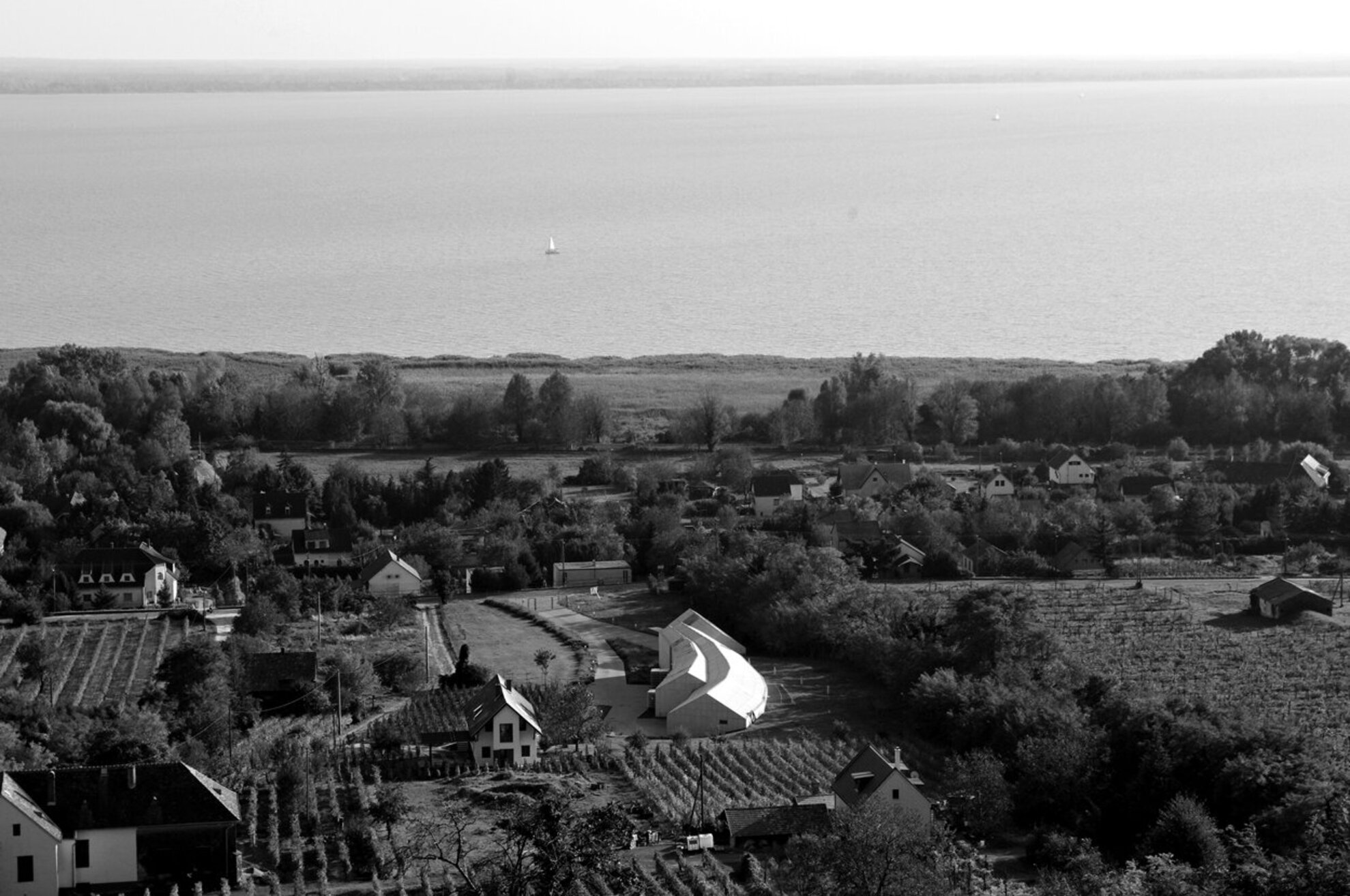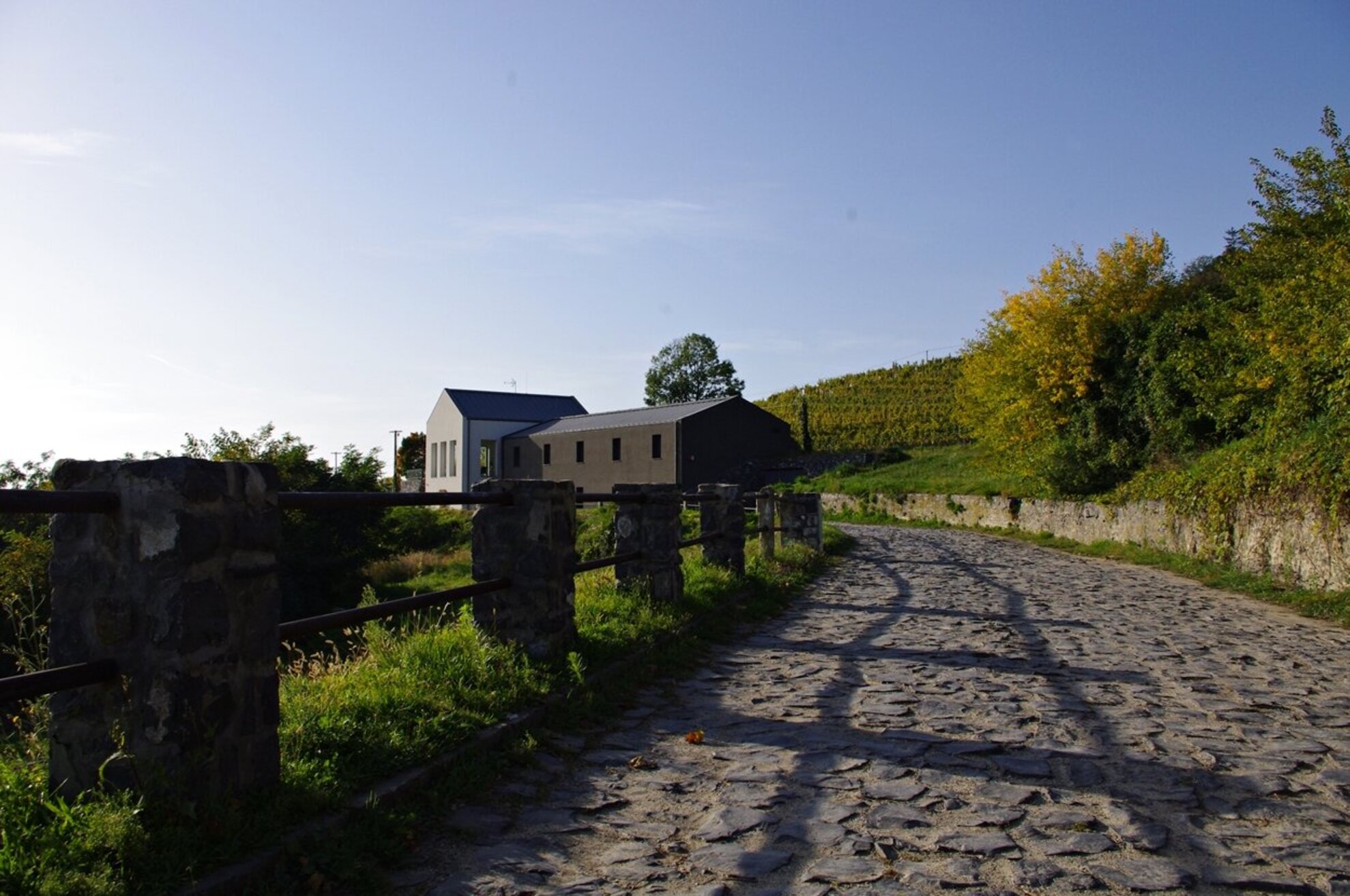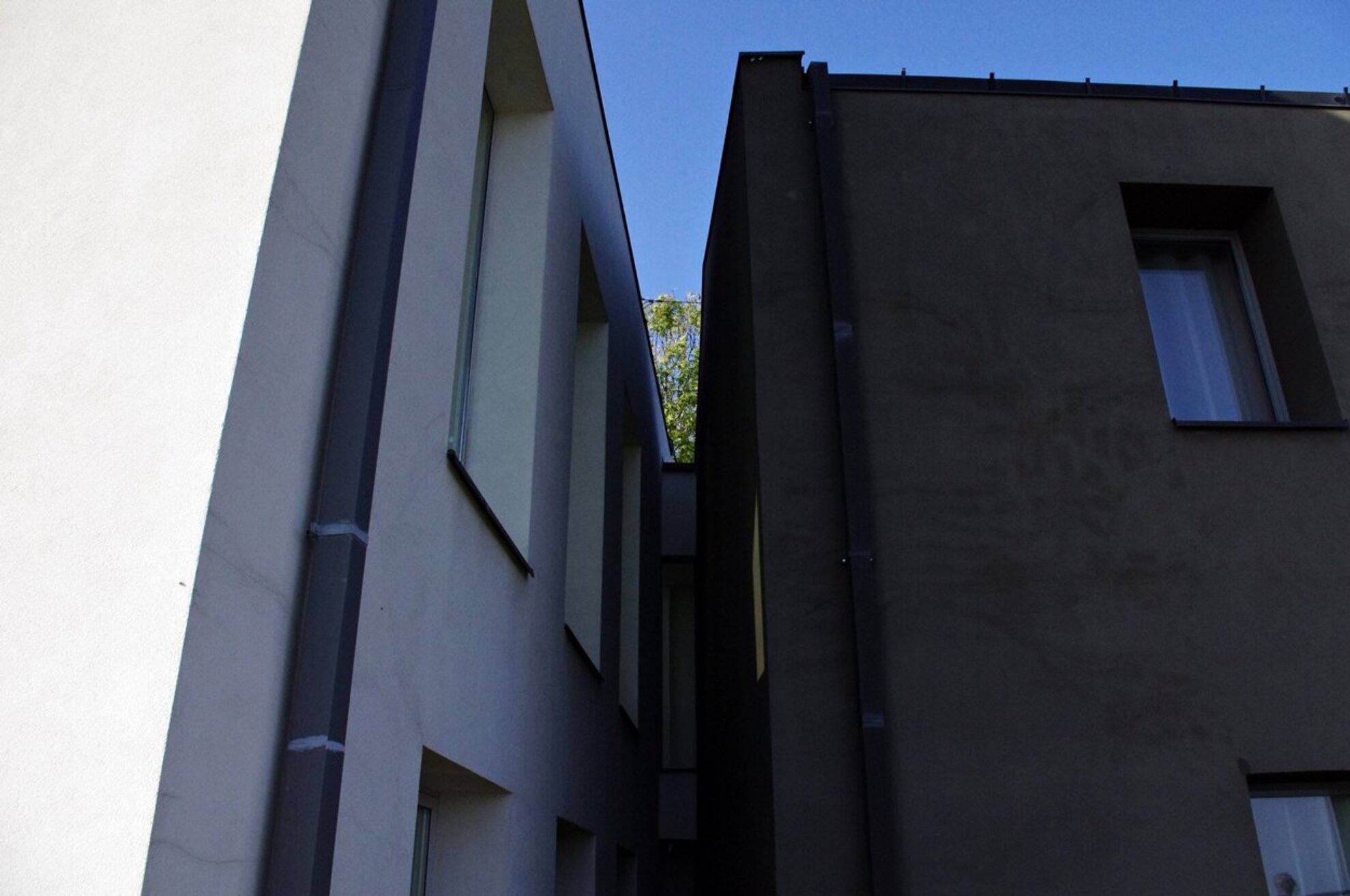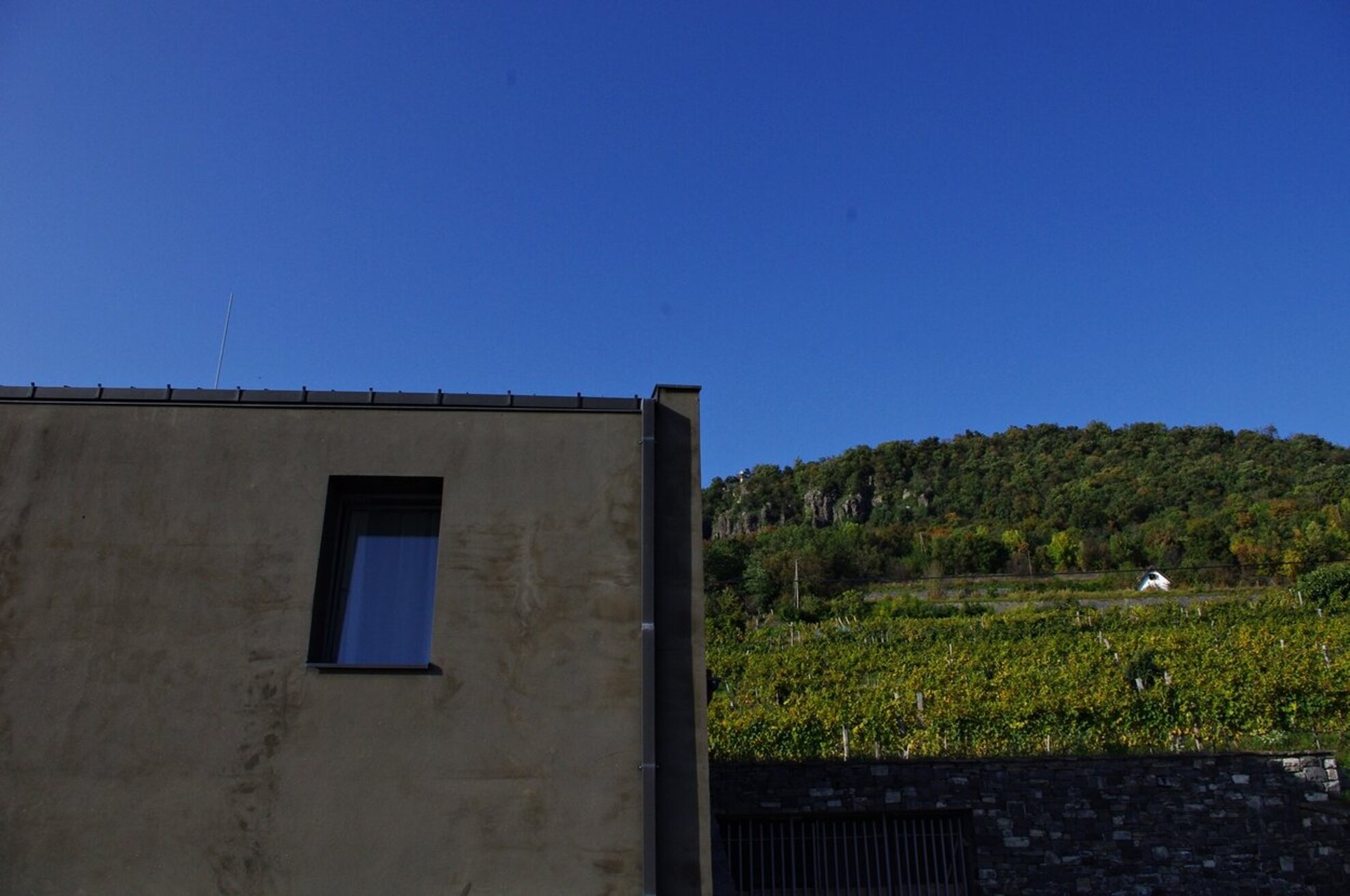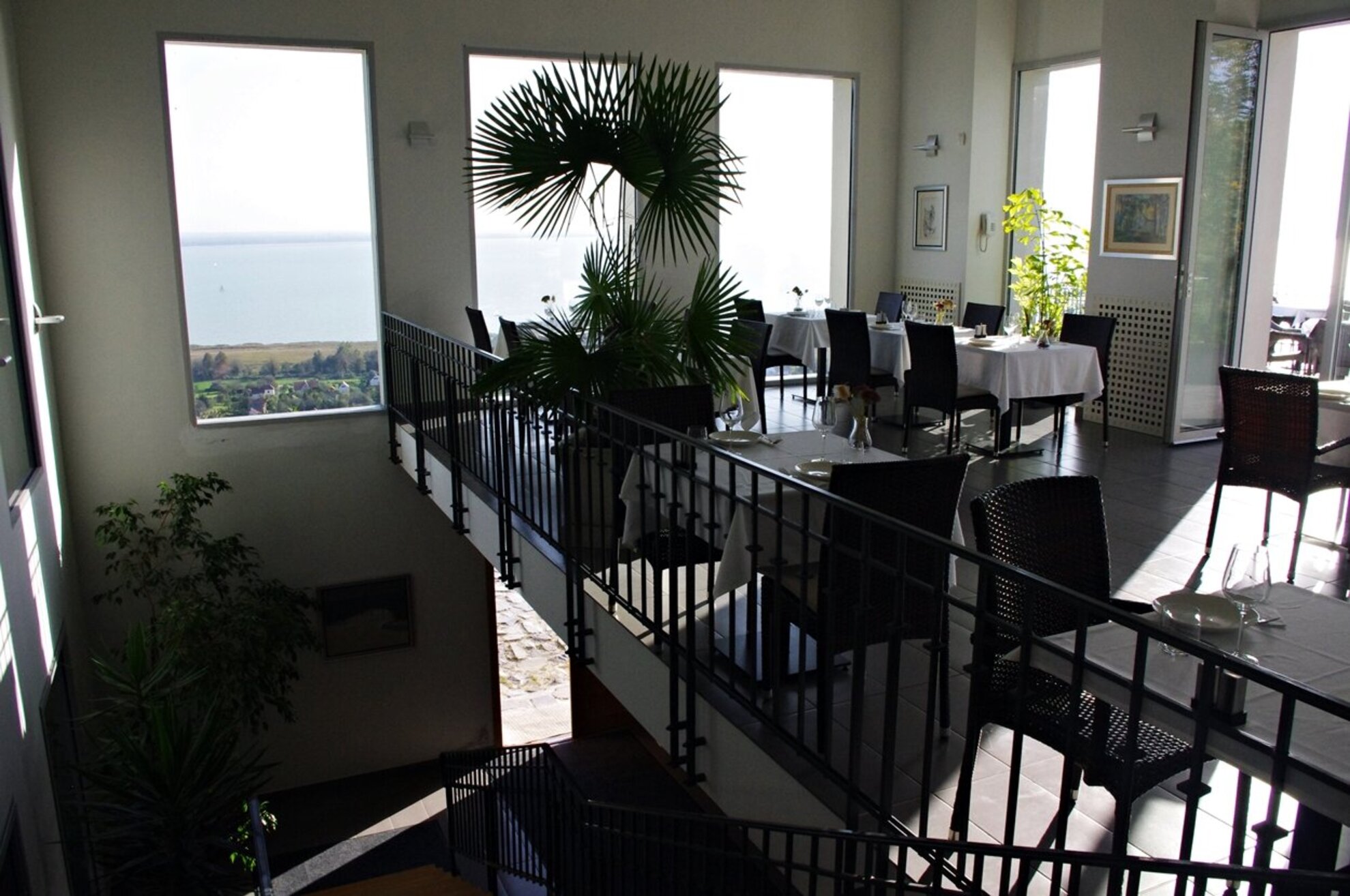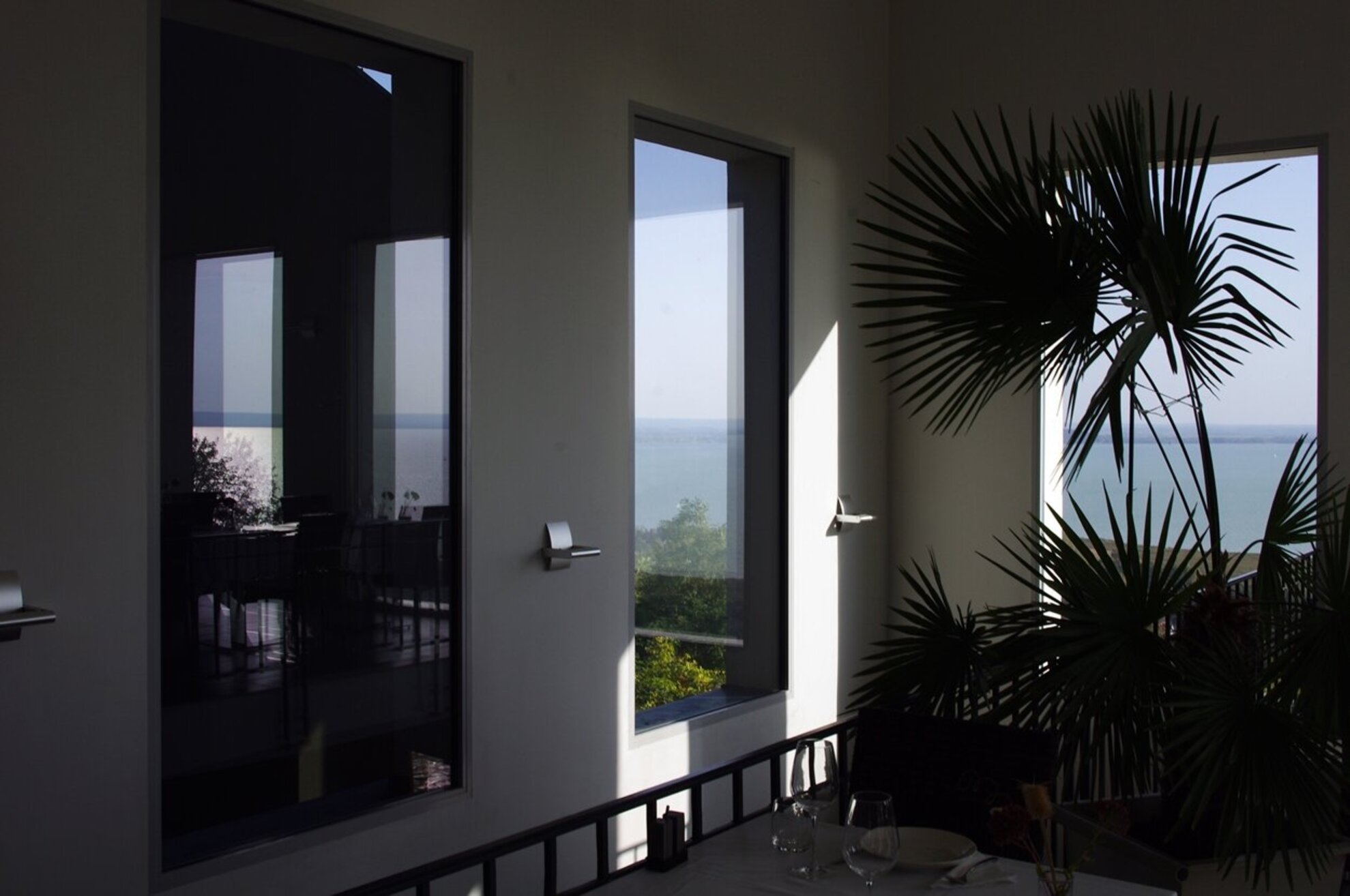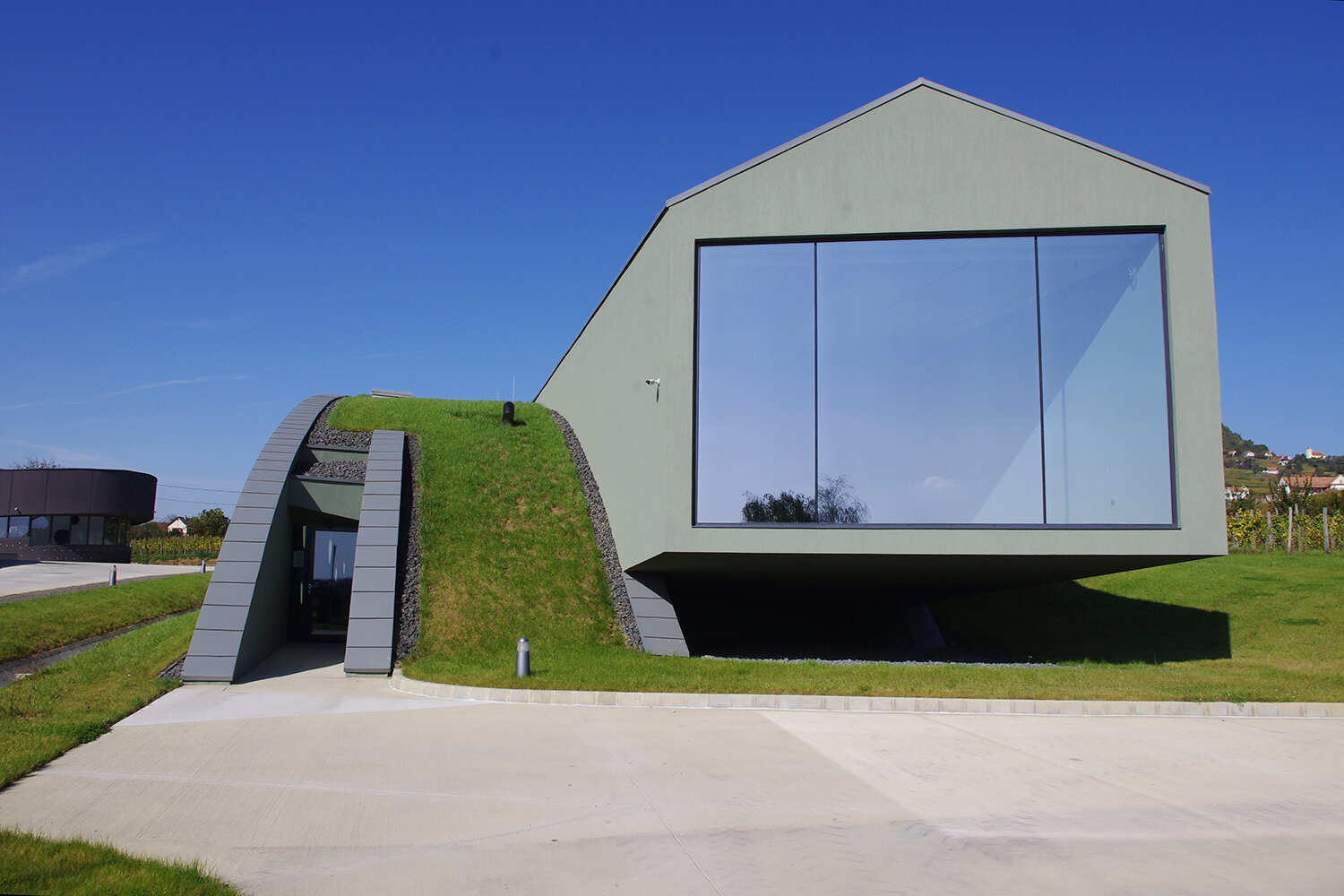The architecture of the shores of Lake Balaton is dominated by (luckily) surviving rustic buildings, the turn-of-the-century classical or Swiss-style hotels at popular resorts, the typical summer homes of the Kádár era (1956-1988), and the tasteless style riot of the 1990ies. Fortunately, you can find an increasing number of quality modern buildings, so we decided to introduce three of them that belong to modern wineries in the Balaton Uplands.
Gilvesy Winery
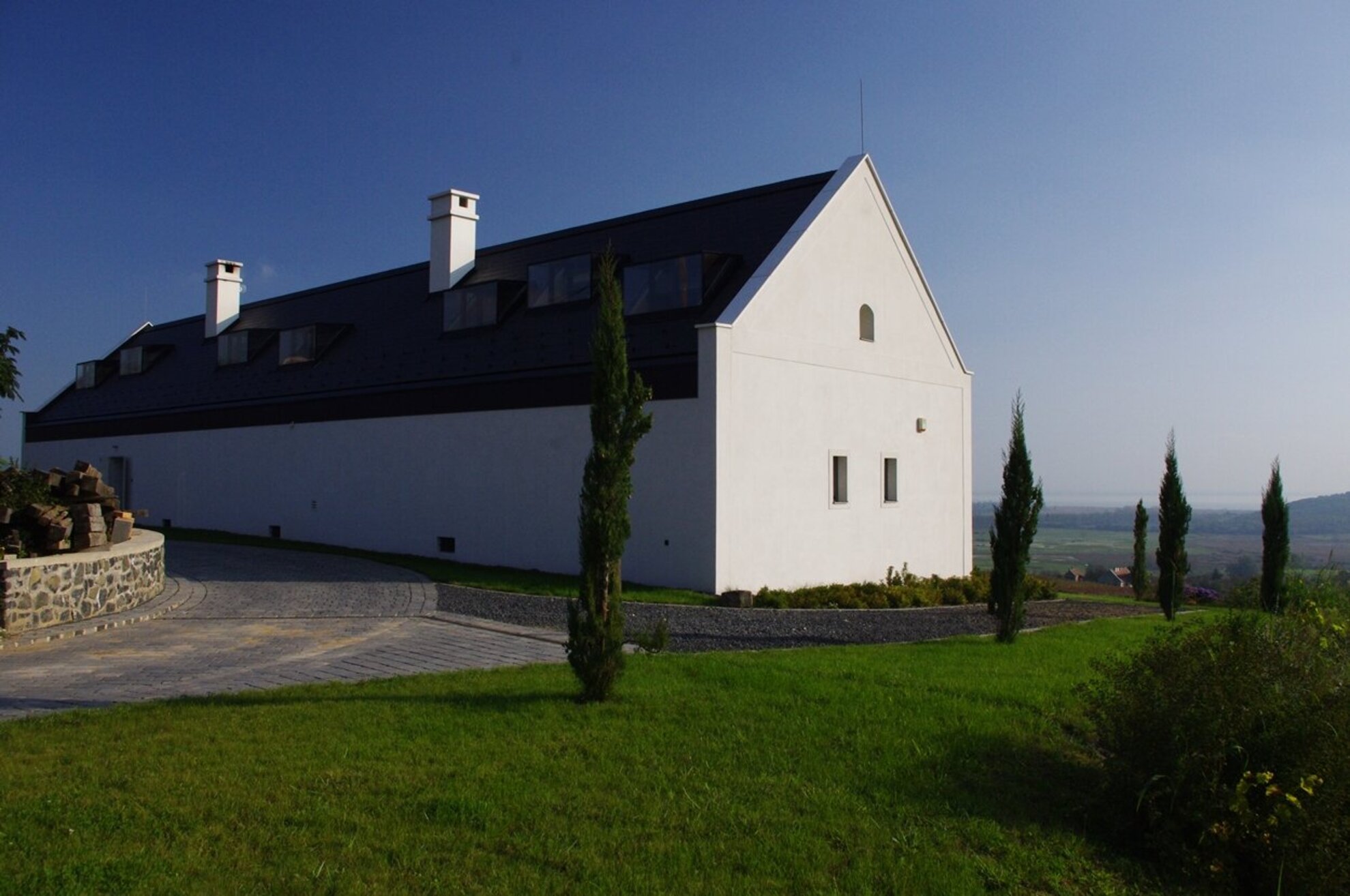
As you approach Szent György-hegy, you catch sight of the white mass of the former Esterházy press house and winemaker's cottage in the middle of the hill swiftly. Returning from Canada, the current owner bought the dilapidated historical building in the 1990ies. After 20 years. it was reborn in harmony with the plans of its owner, Róbert Gilvásy (originally an architect) and Gábor Sajtos.
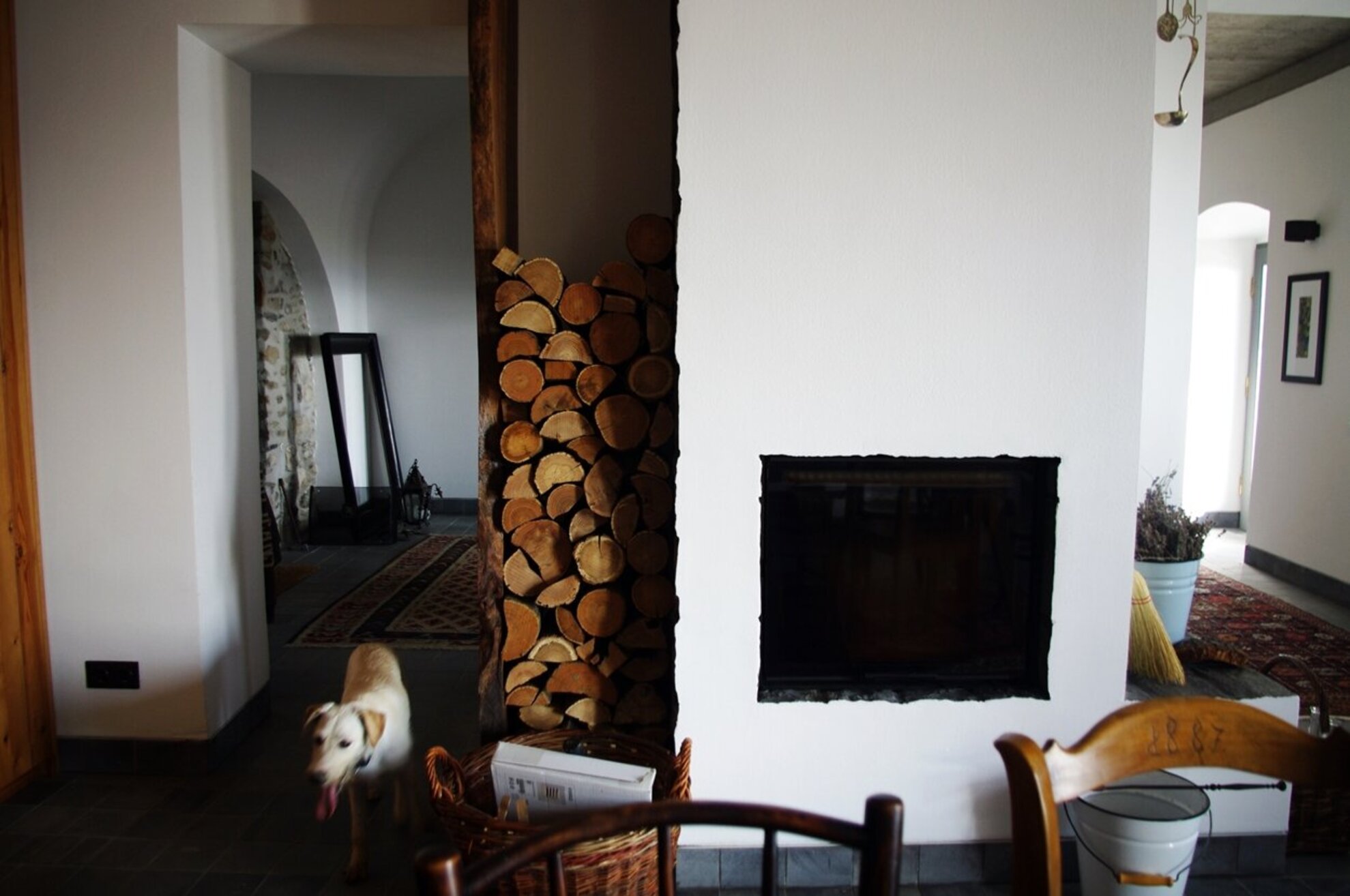
It was not strictly a re-creation of the original, since we know very little about the original building. The new building retained the proportions, mass, contour and remaining load bearing walls of the one-time original, but it is at the same time a contemporary construction to the core, which even triggered the attention of Archdaily. The building, which is larger than most in the area, was used for wine making and served as accommodation for the Esterházy vineyard's workers. As opposed to the prevailing practice, the house and the cellar below were built parallel to and not towards the hillside. The brick vault of the cellar was cleaned and restored, while they wanted to cover the interior of the near by processing facility with tiles, but ended up using the simpler and more noble fair-faced concrete.
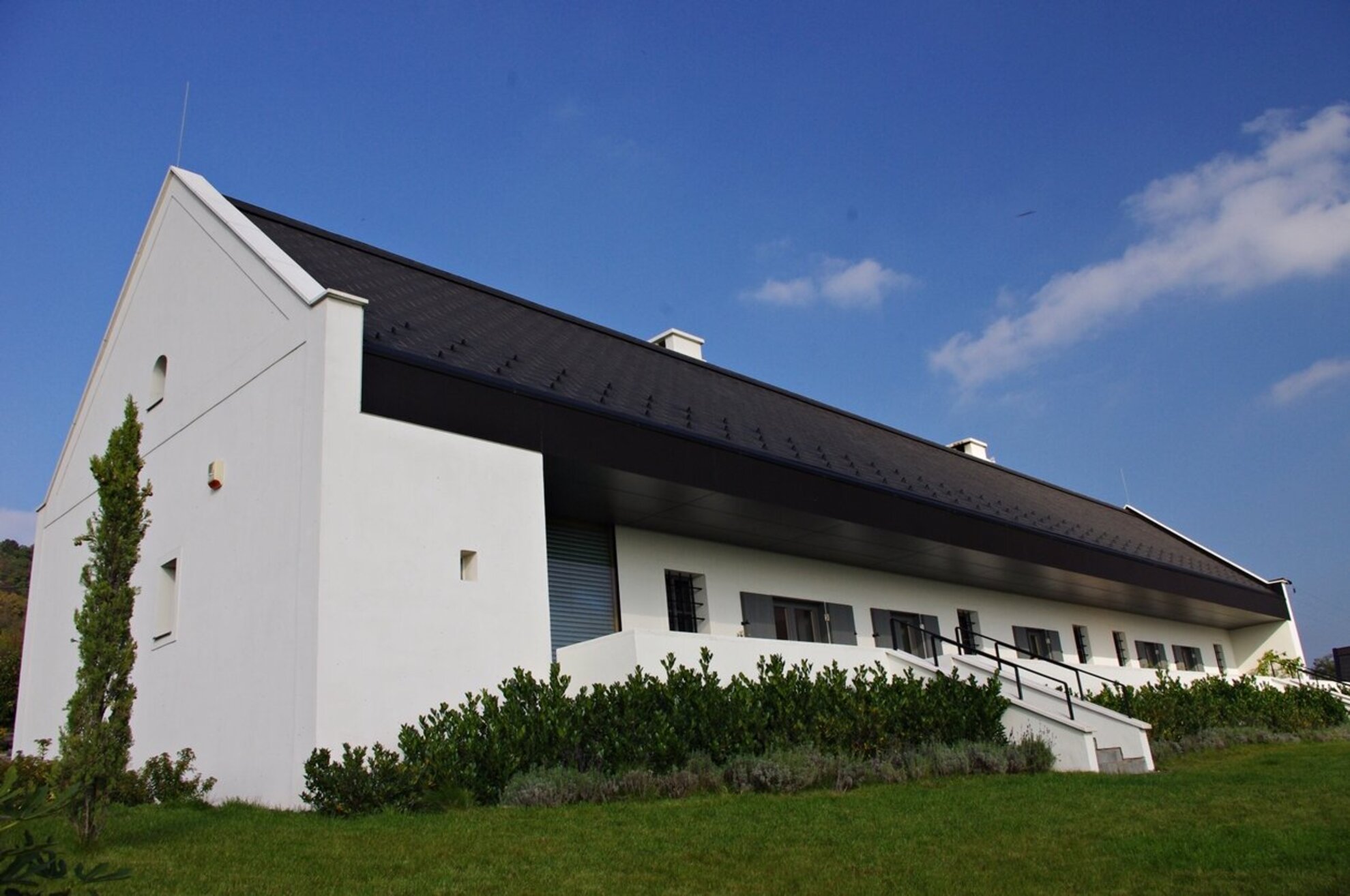
The roof is covered with dark-coloured slate, which is in harmony with the colour of basalt. the original timber columns of the porch were totally demolished, without any drawing or pictures left behind.As the replacement brick pillars did not conform to the character of the building, the architects designed a cantilivered porch without supporting columns, which in turn also has its historical precedents and opens unobstructed view on the surroundings. Instead of the traditional roof windows that let in but little light, box-like frameless 'glass eyes' were installed, spaced irregularly. The ground floor is connected primarily to the outside world, while the upper story is connected to the slopes.
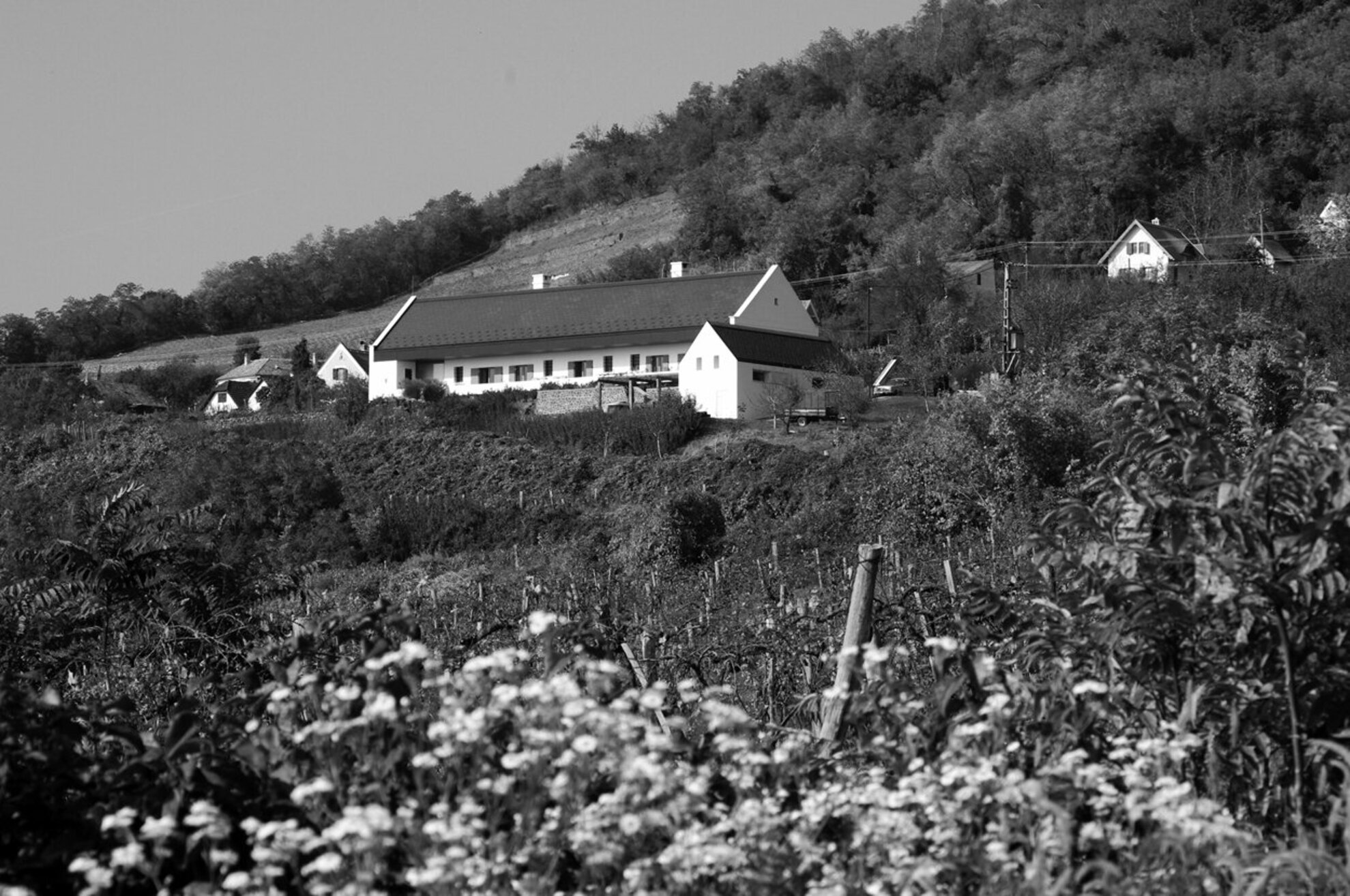
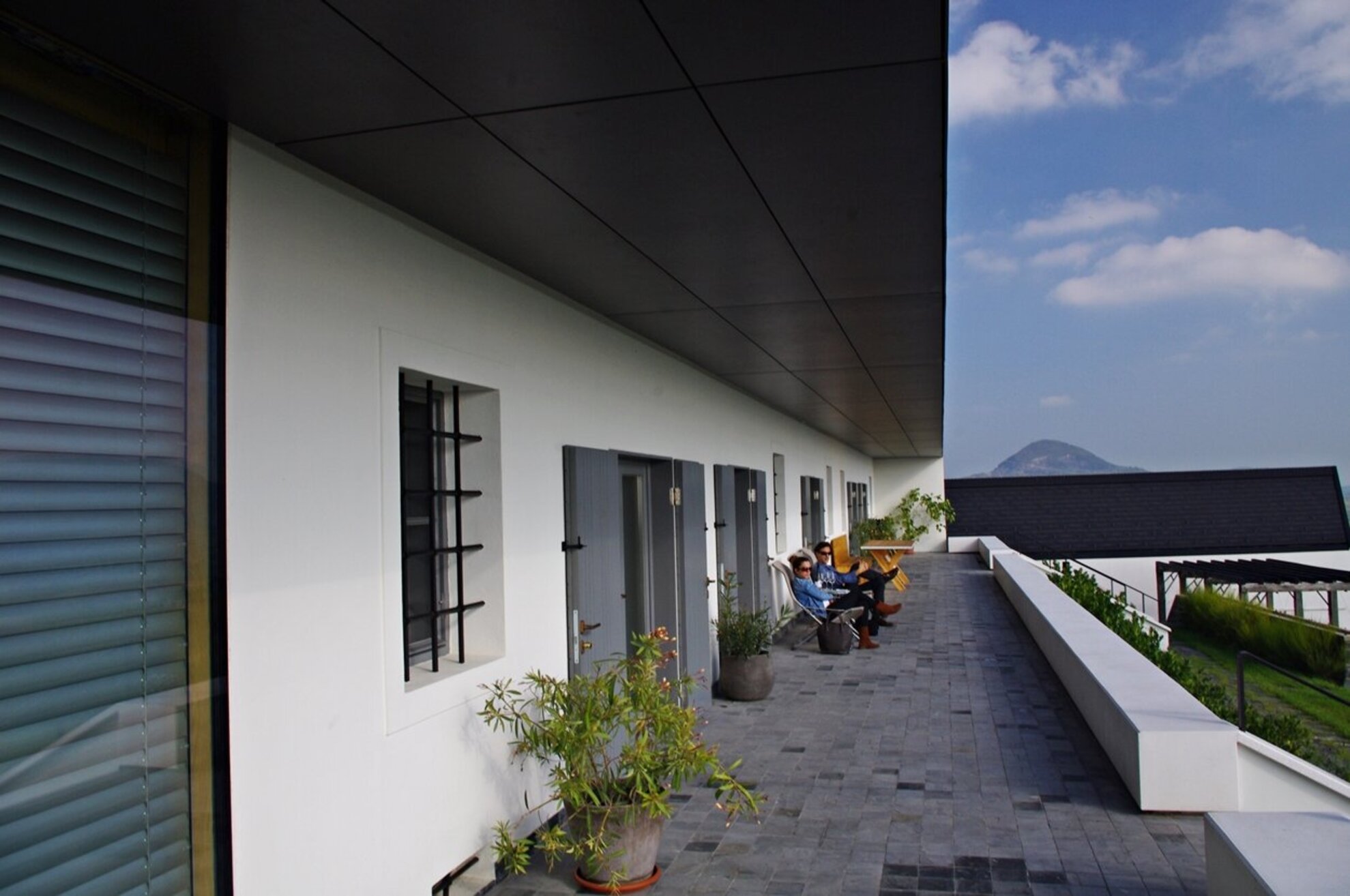
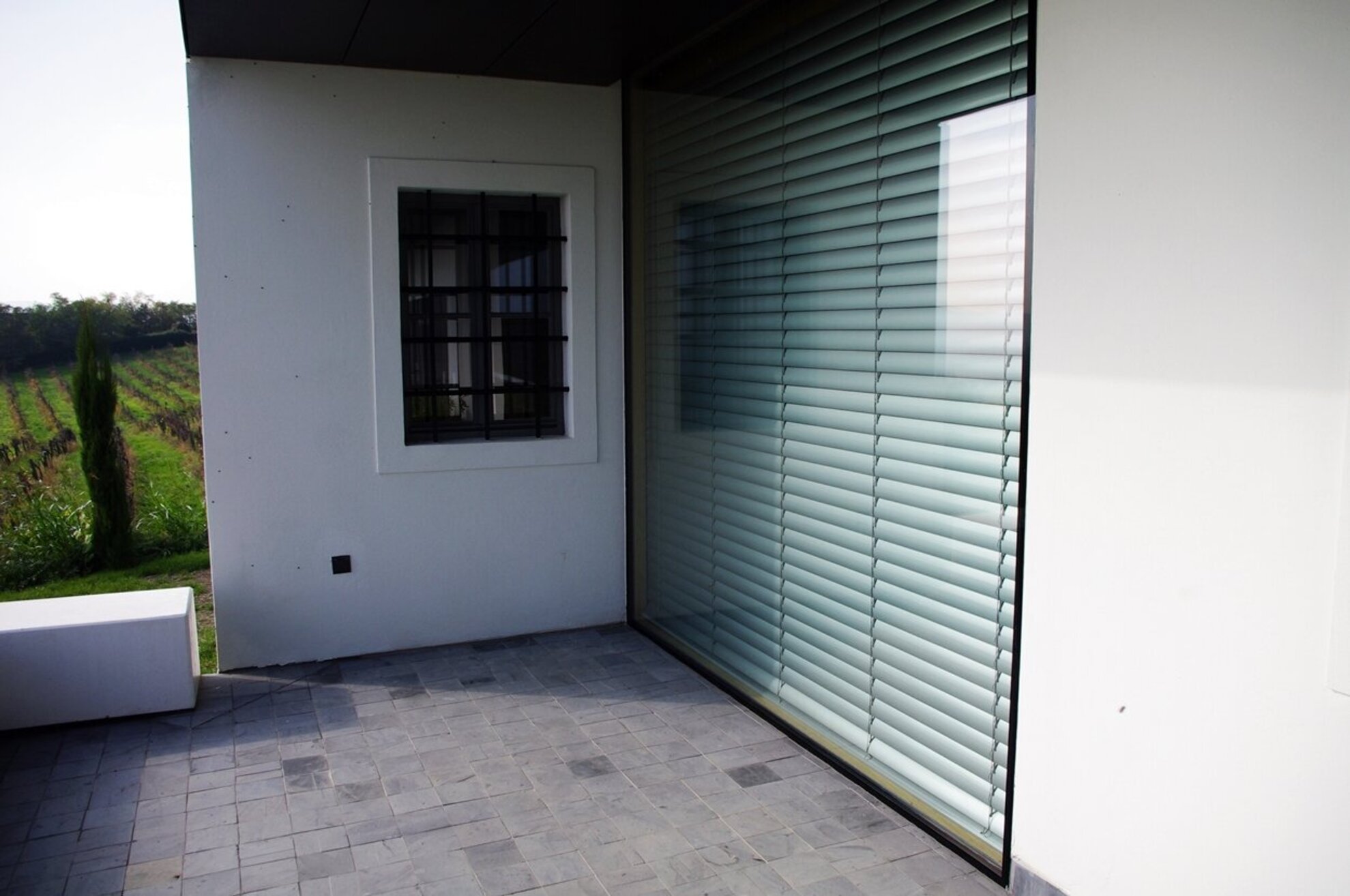
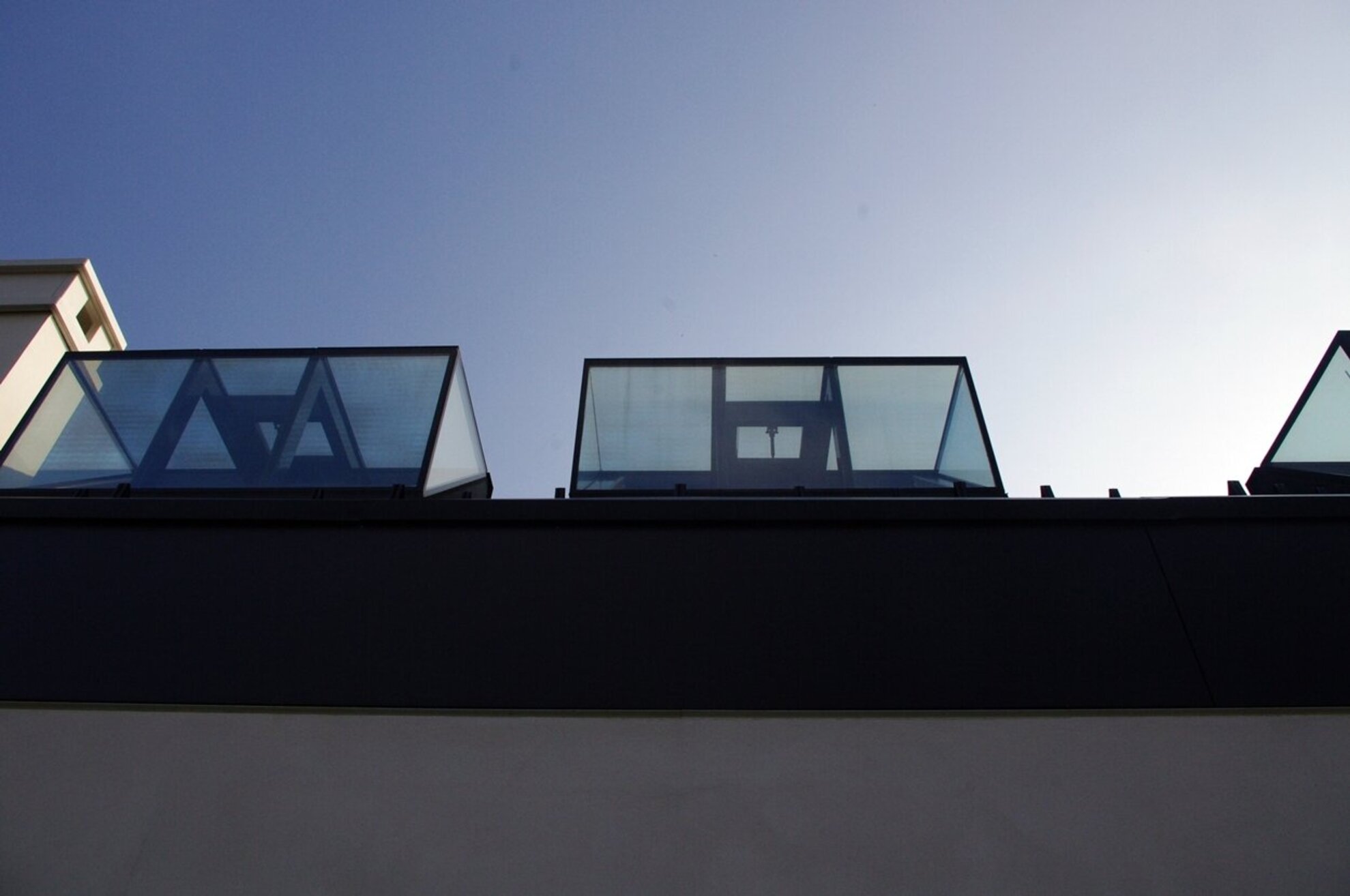
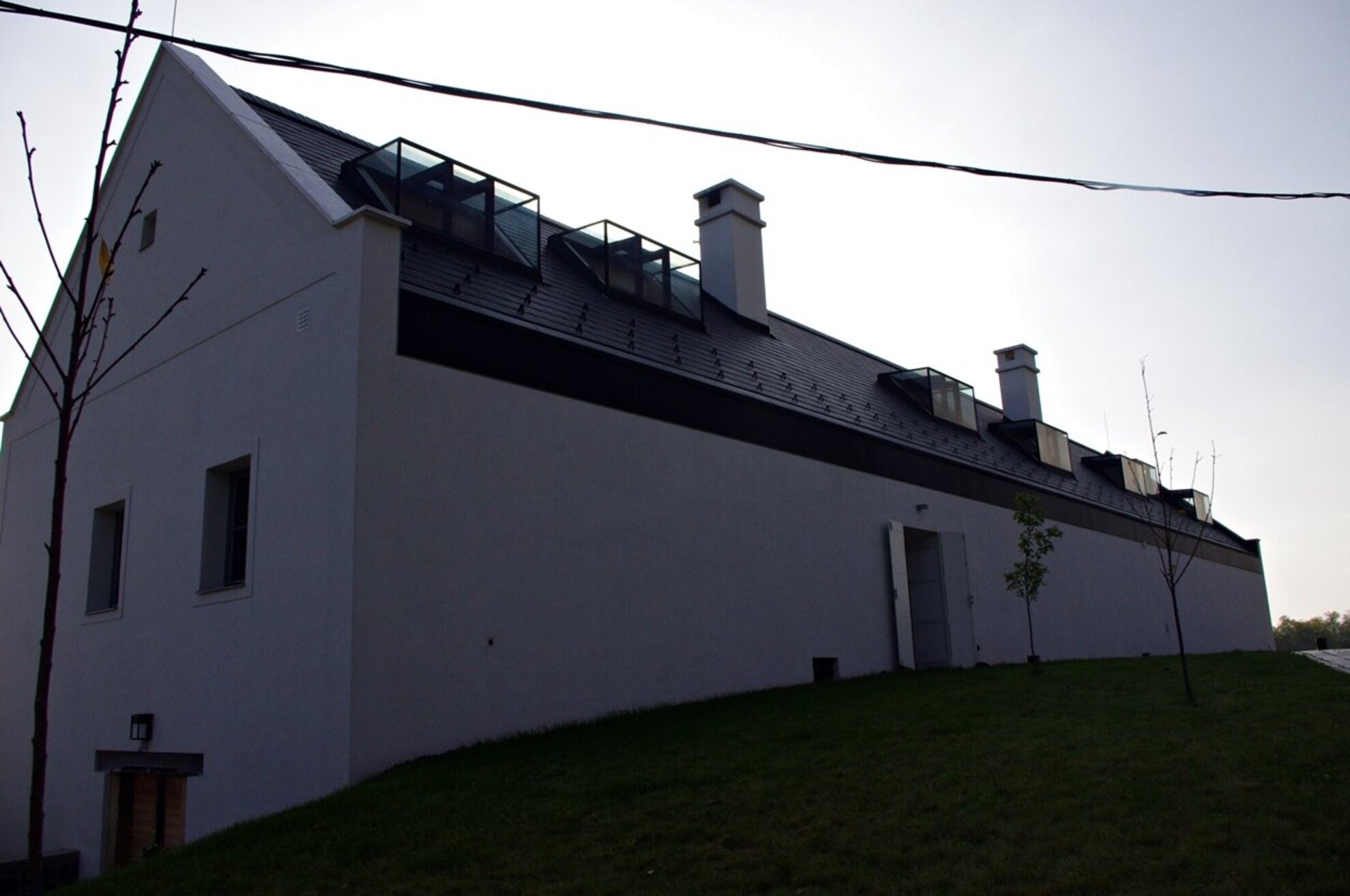
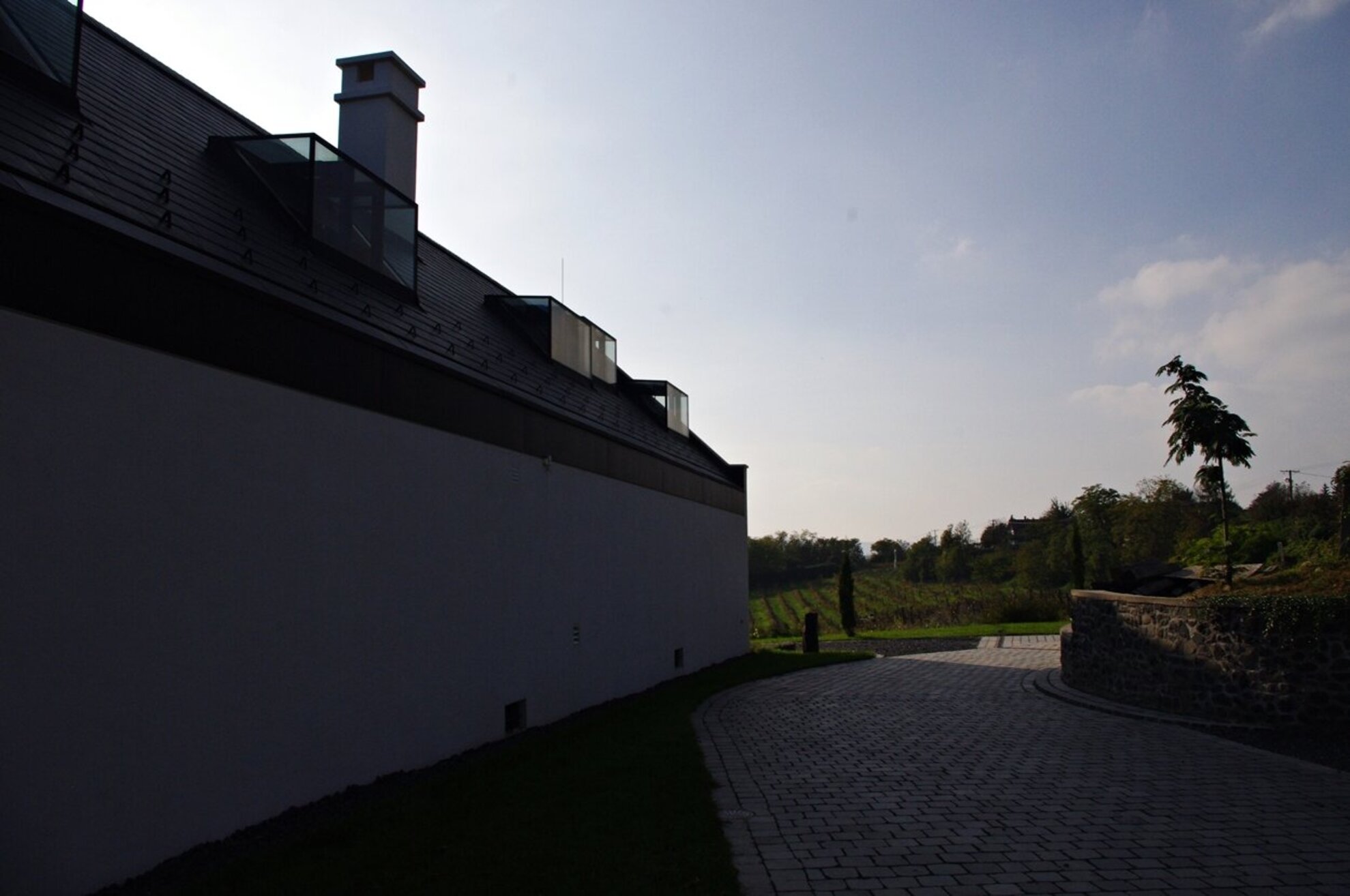
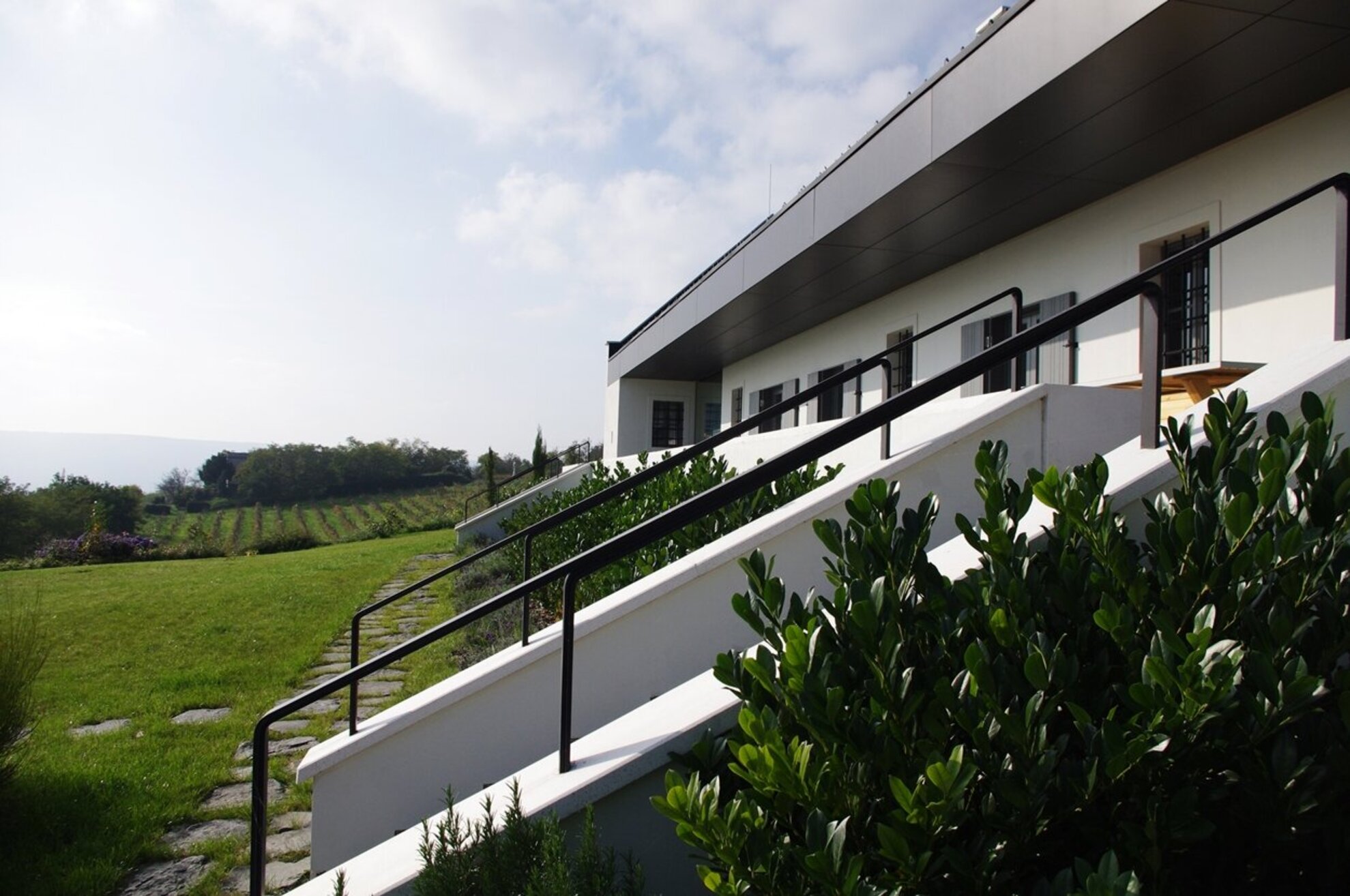
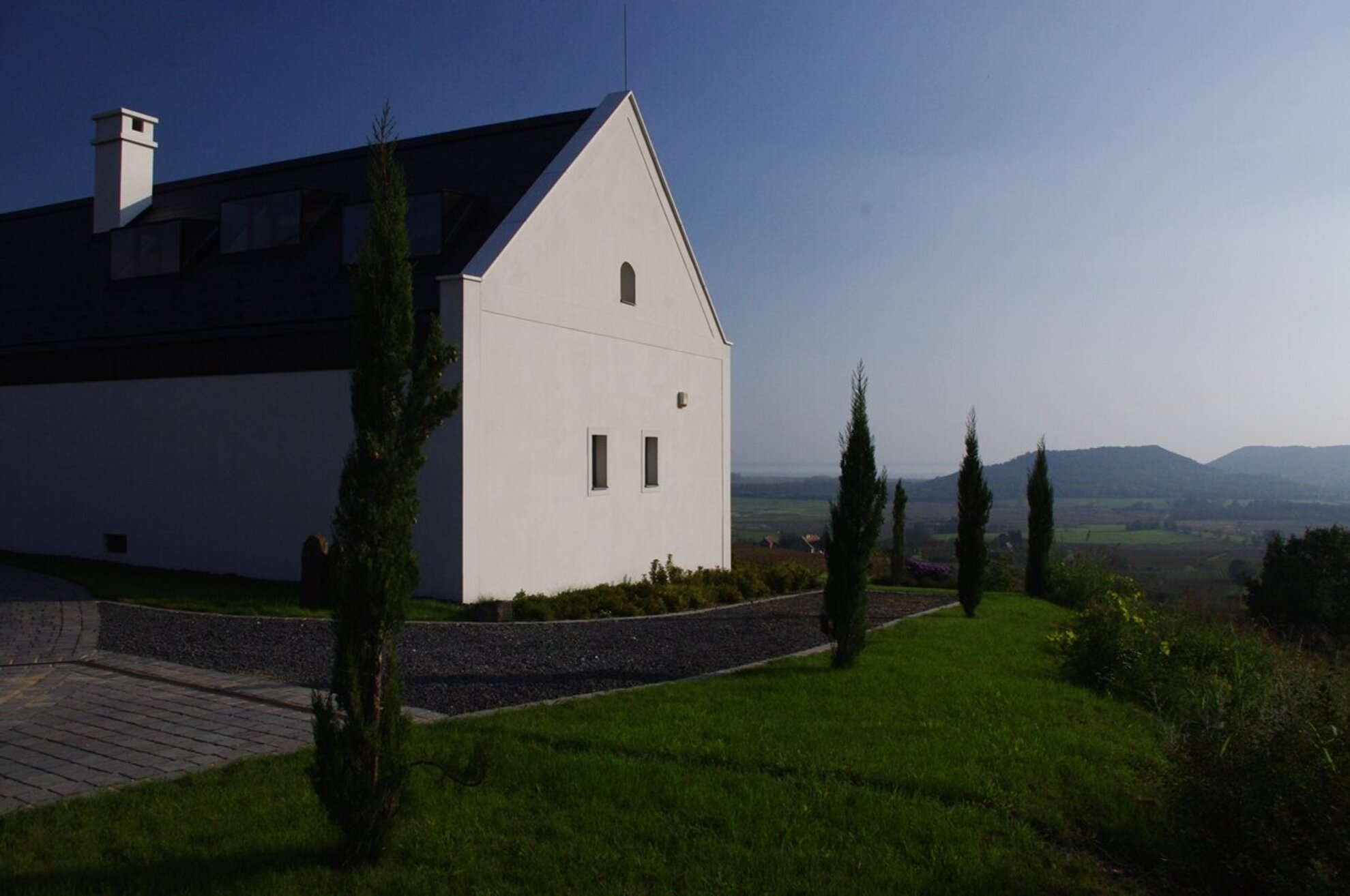
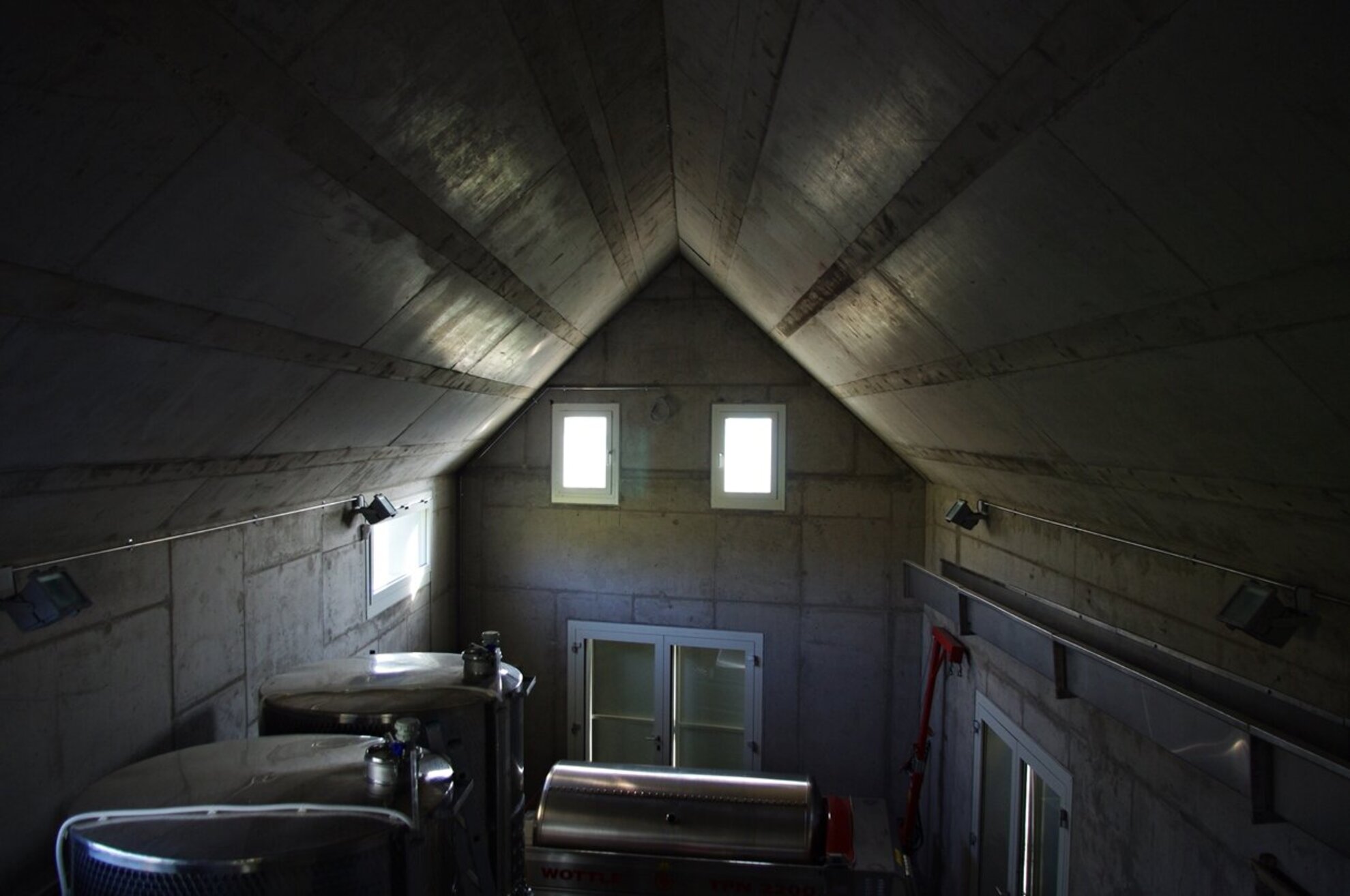
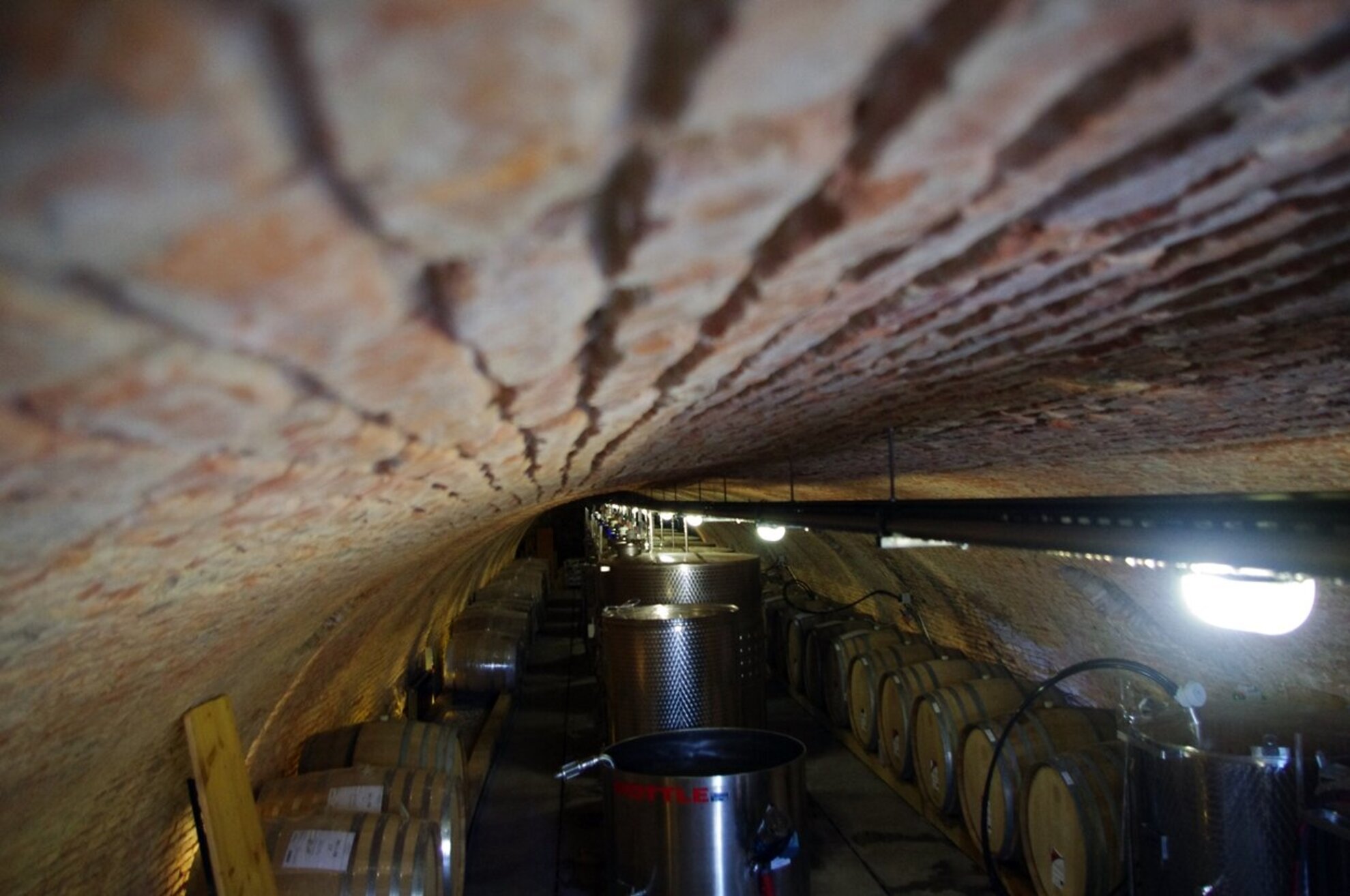
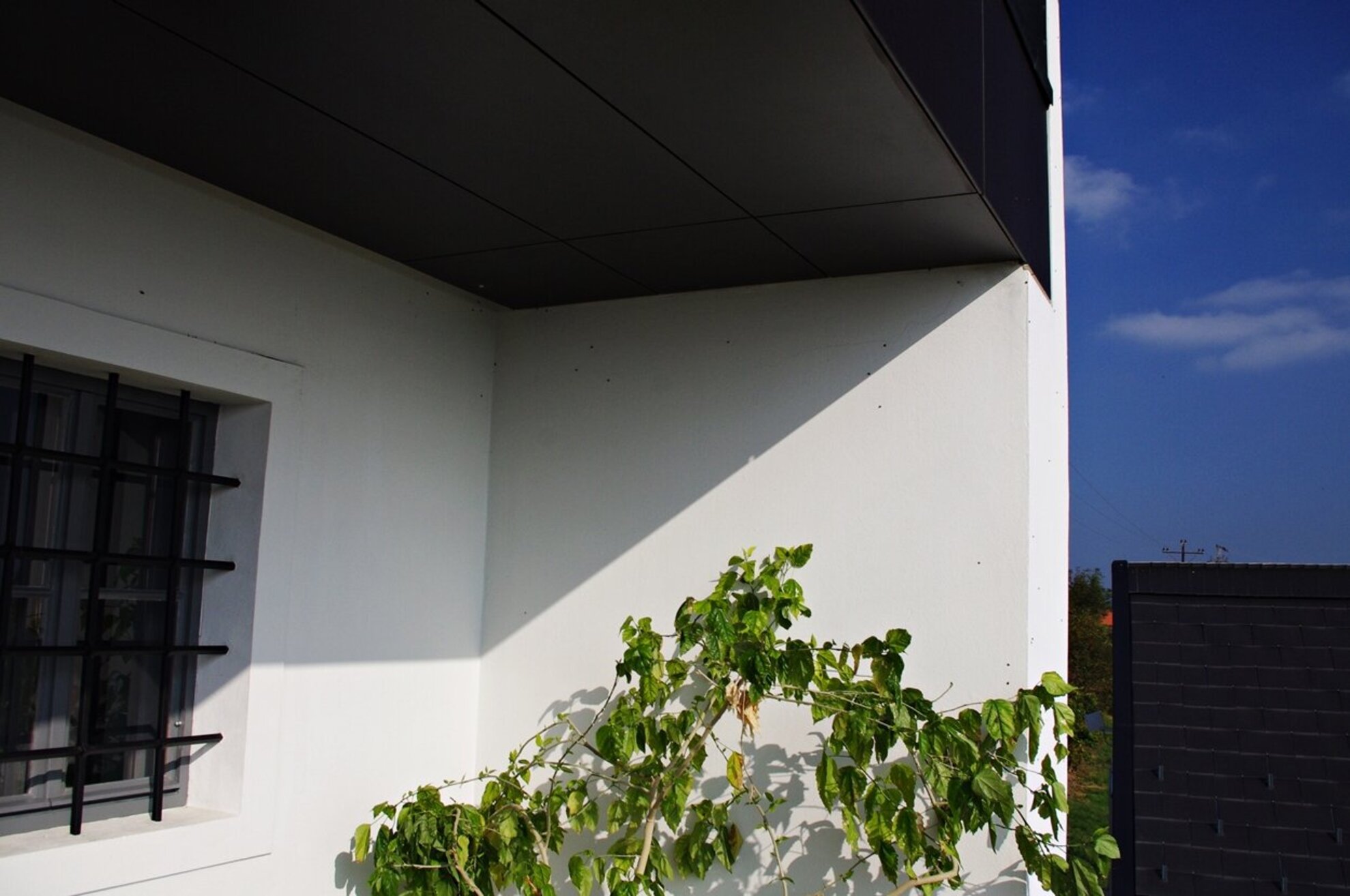
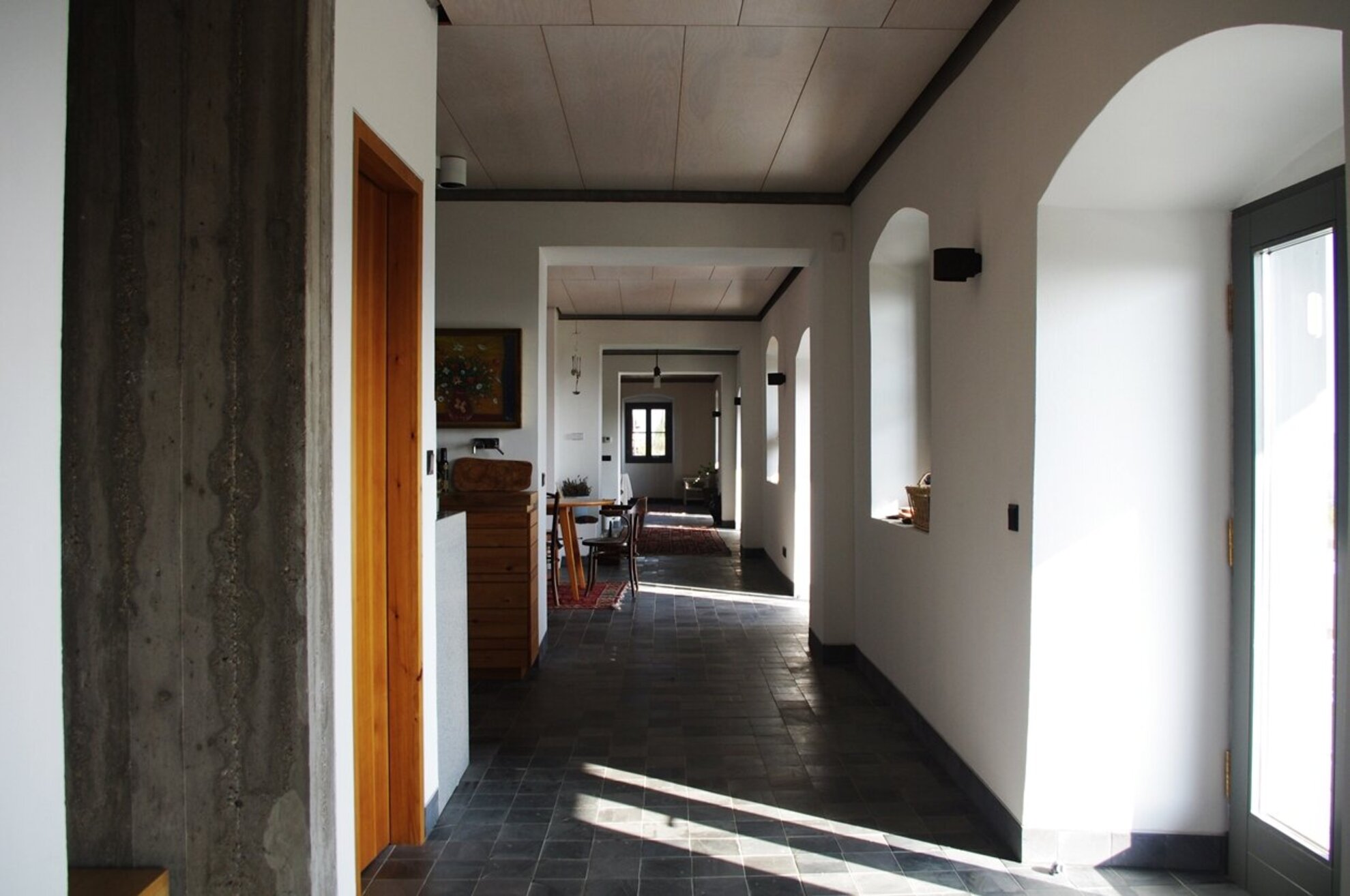
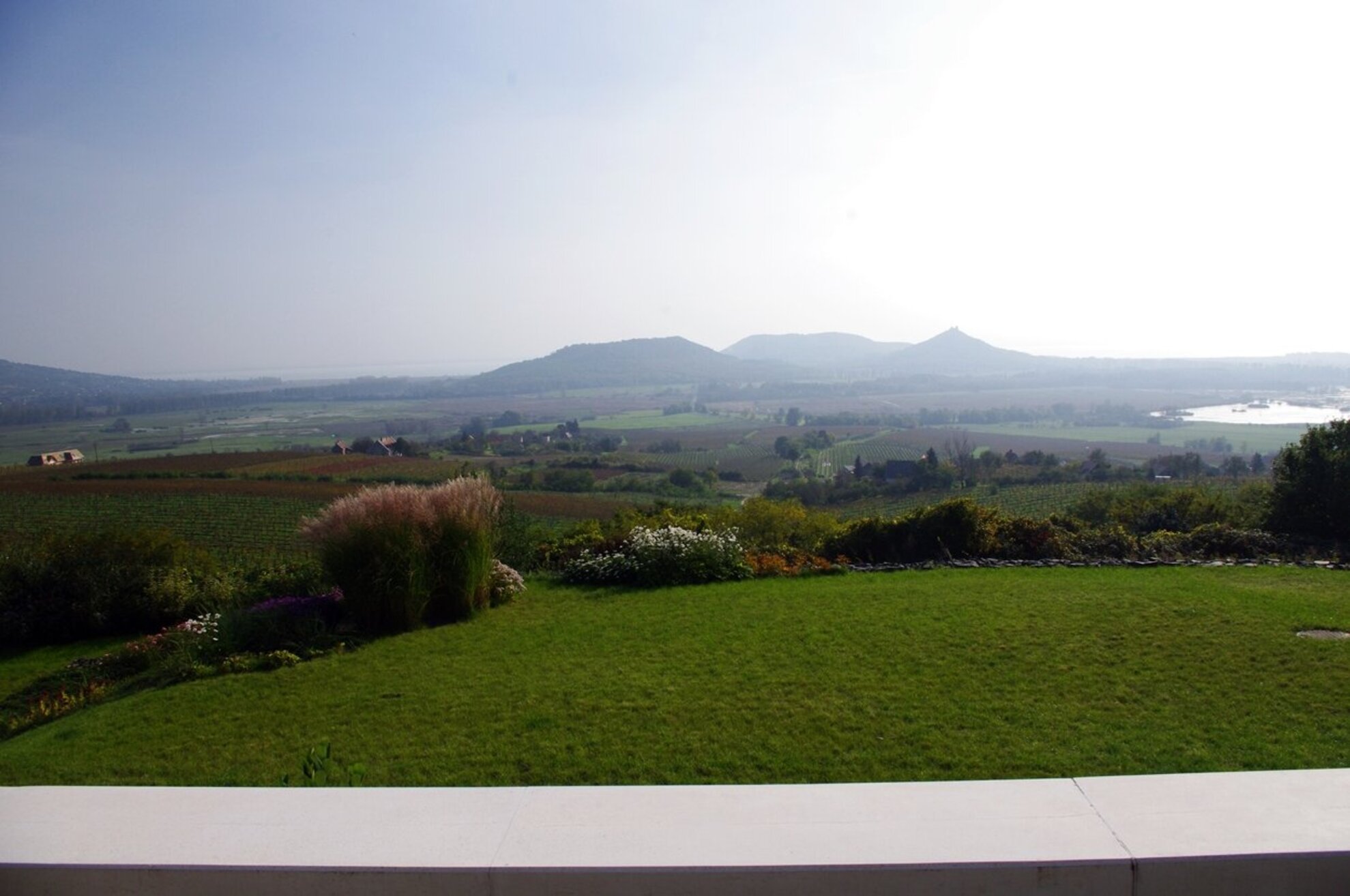
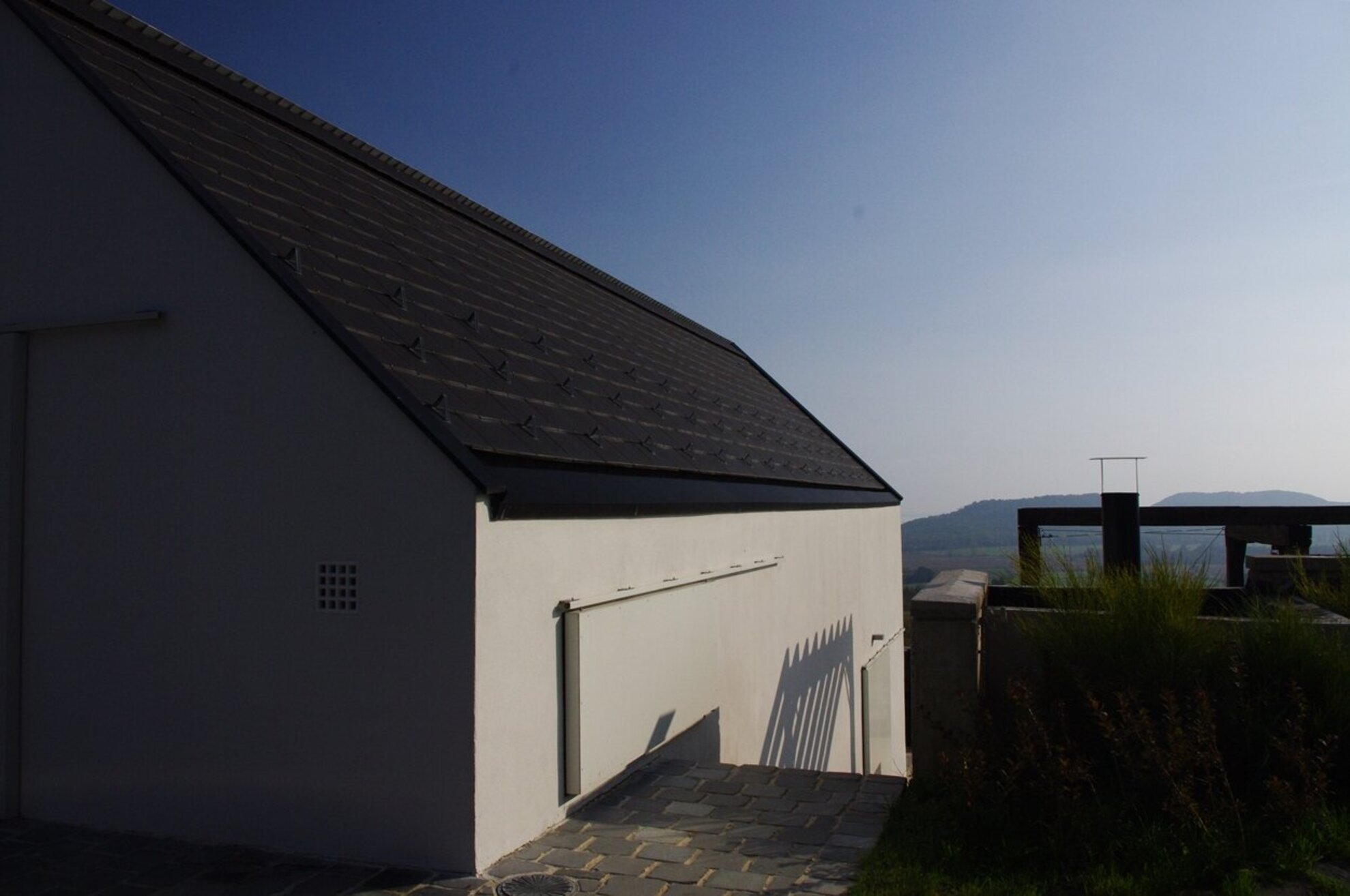
The building radiating tranquillity and simplicity is though-out in all of it details, which is reinforced by the use of noble materials. Through the abstraction of the old architecture, the creators constructed a new building that shows respect to traditions. Watching this building in silence is as rewarding as gazing at the view below, while sipping on a glass of Gilvesy wine. Apropos wine: the Gilvesy winery is assisted by vintner Márton Ruppert, and its wines are bottled at Kreinbacher's.
Kreinbacher Winery
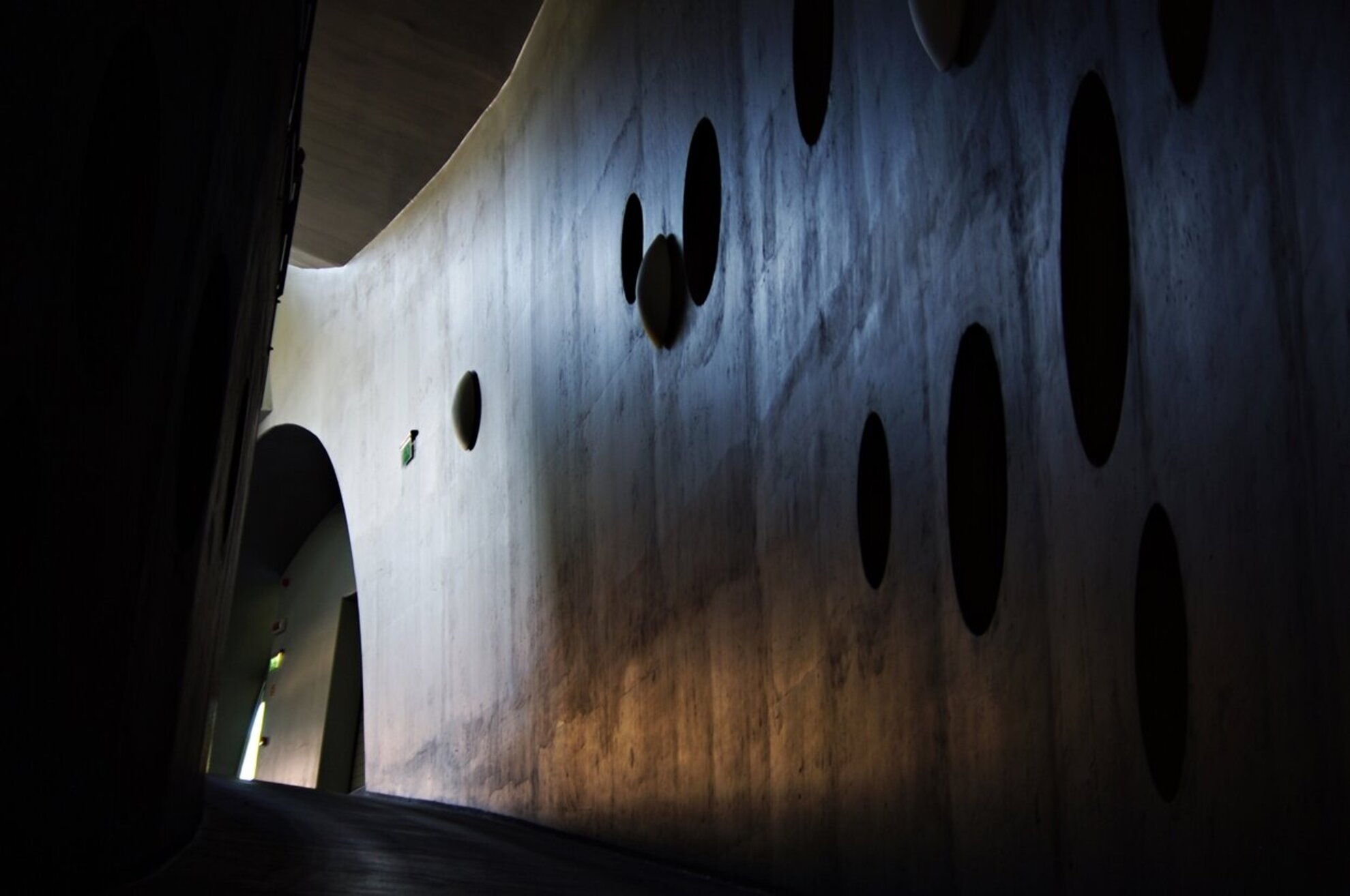
The Kreinbacher Winery pulled of a feat in beginning champagne production in the Somló region a few years ago. It's all done in style: the production is based on local Furmint, assisted by the French vintner Christian Forget and follows the traditional Champagne method. The excellent raw material and the expertise would not suffice, weren't it for a proper place for execution: the winery assigned architect Dezső Ekler to the task of designing new facilities, worthy of the future successes.
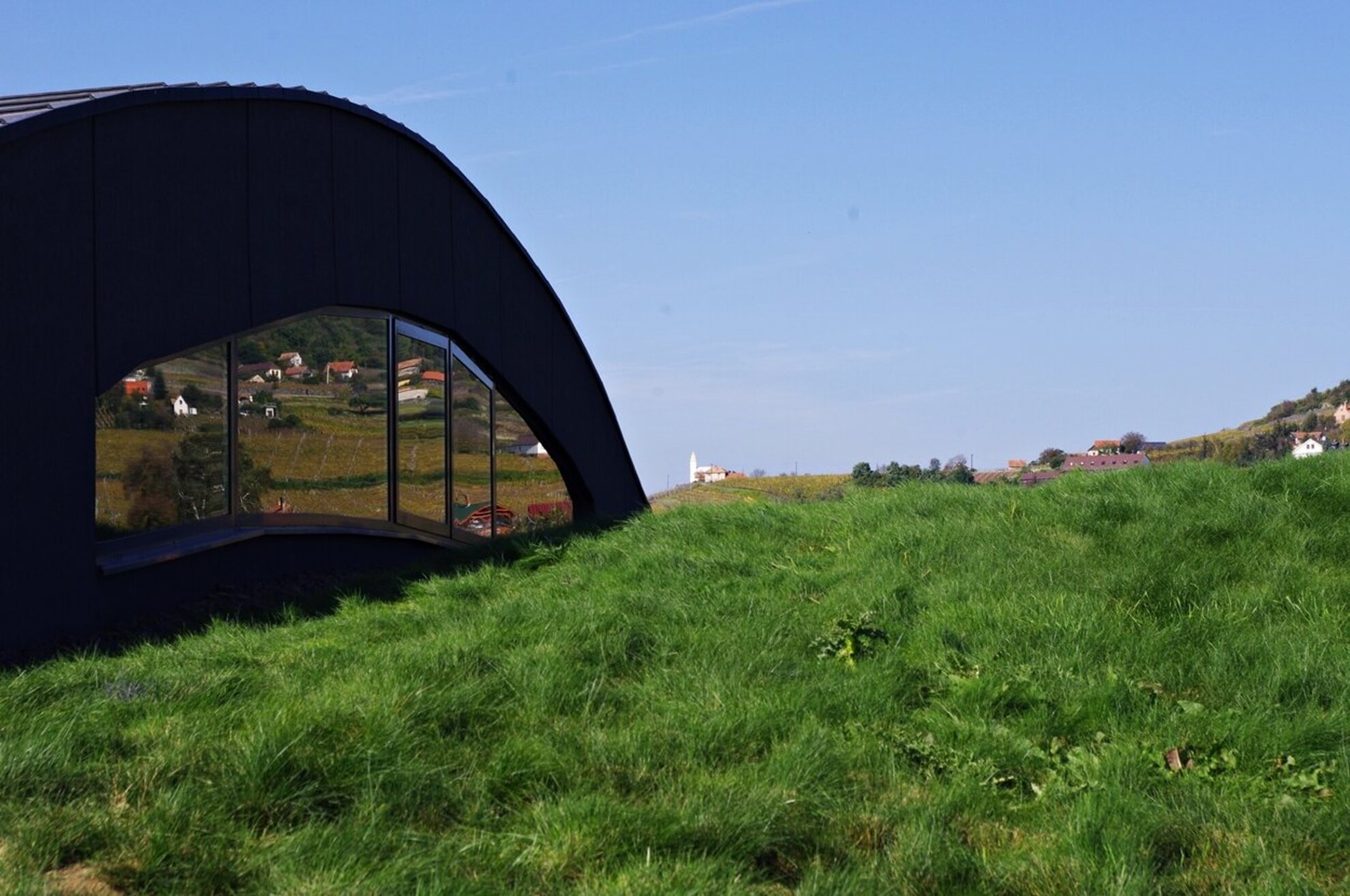
The floor plans of the complex and the individual buildings are reminiscent of the 'last lava river', while the breaks and the interior spaces evoke tectonic motions and lava tubes. We began our visit in the two-story champagne making facility. First, we glimpsed into the offices and the venue of professional tastings, before heading on to the processing hall, where the grapes arrive to be processed with the help of state-of-the-art technology. The next stages of processing take place a floor below.
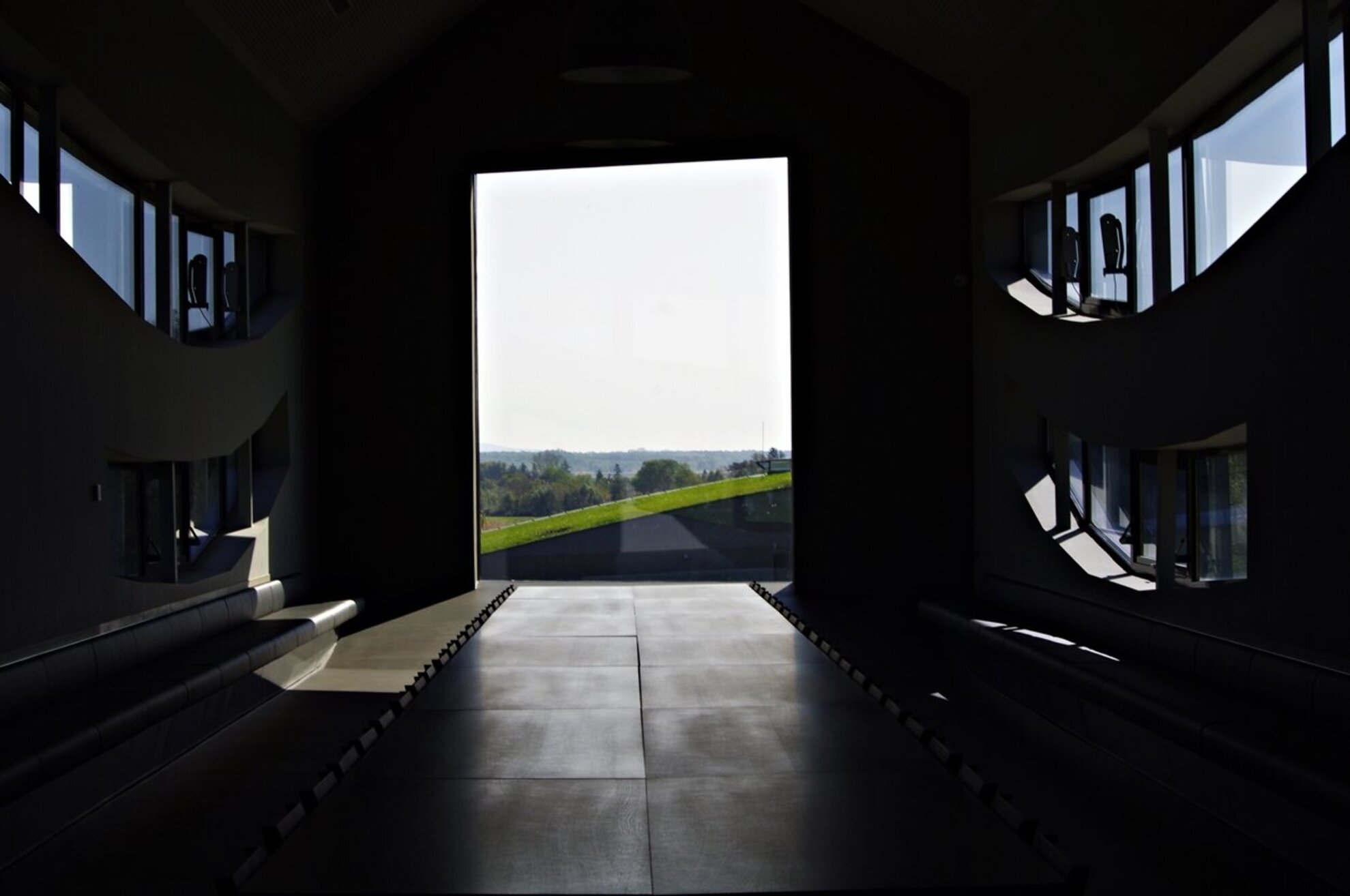
A guided tour of the house here is like a champagne connoisseur course, giving a comprehensive picture of each and every step of the production and a glimpse into trade secrets, like the essential role of acids, the art of blending, and that the cube-shaped grates standing on their corner are automatically moved at regular intervals to mimic turning by hand. There is a passage under the artificial hill to the winery and wine tasting room. Your curiosity regarding this almost mystical process could be satisfied next spring, by the newly opening visitor centre.
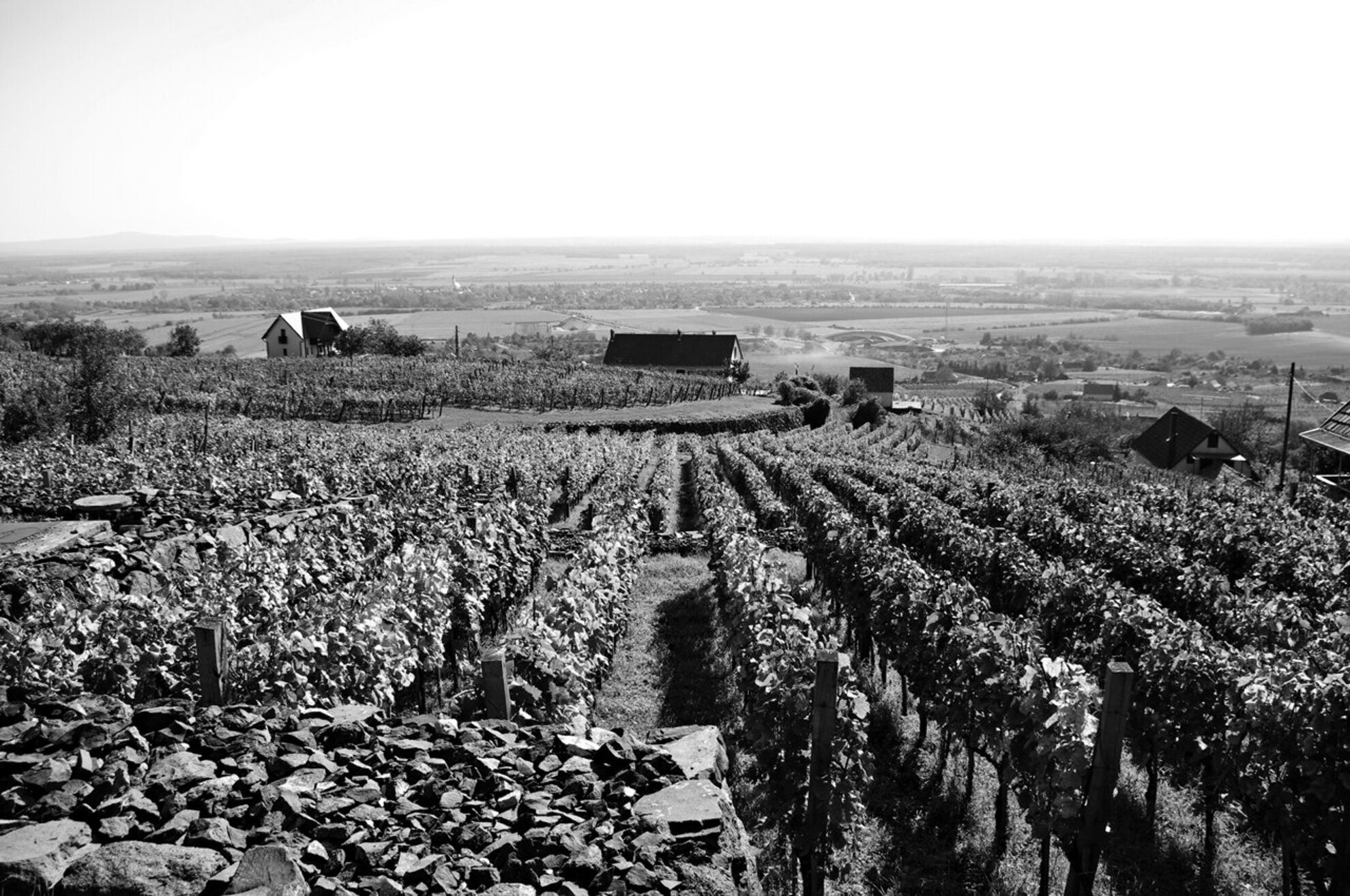
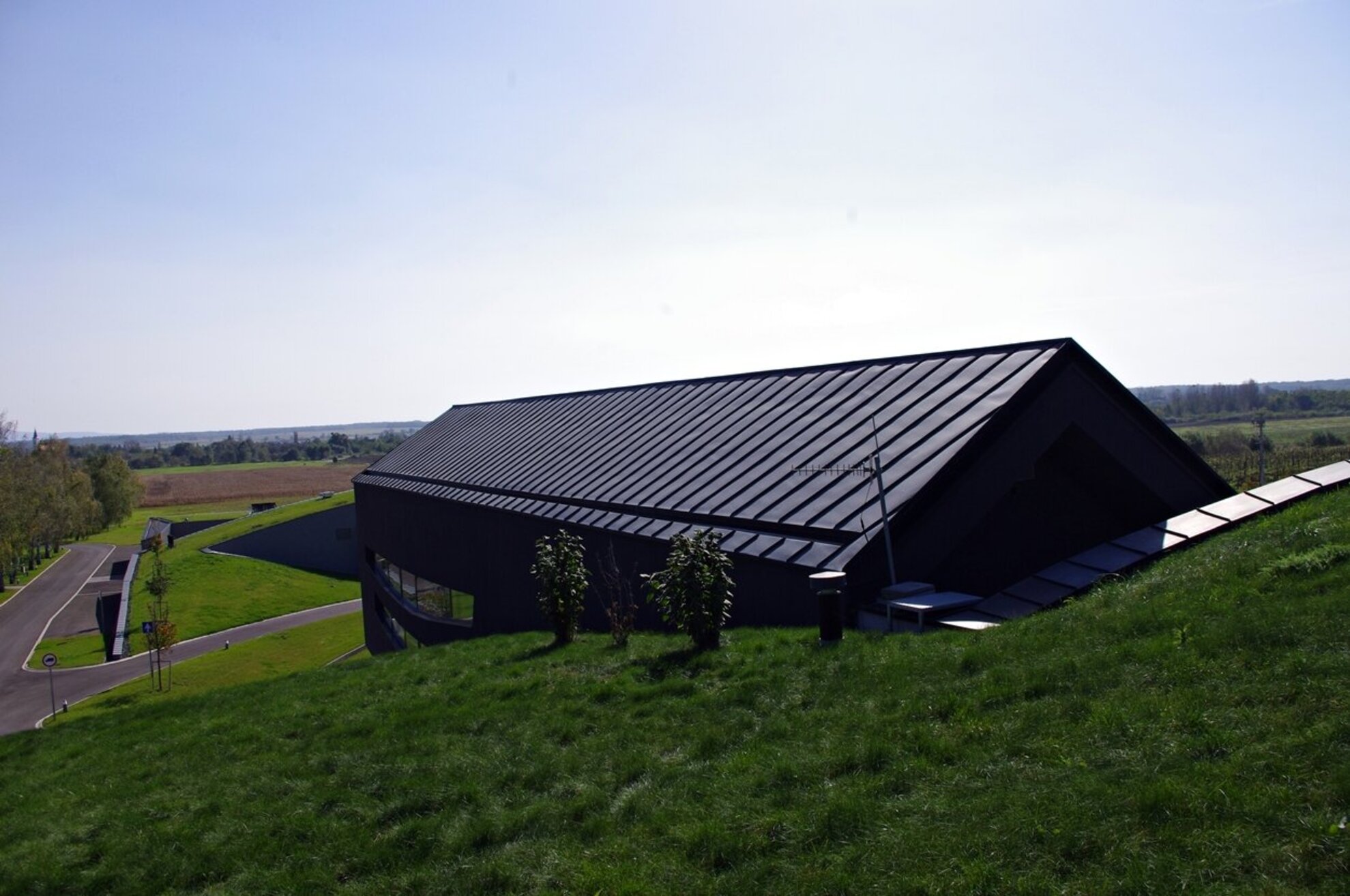
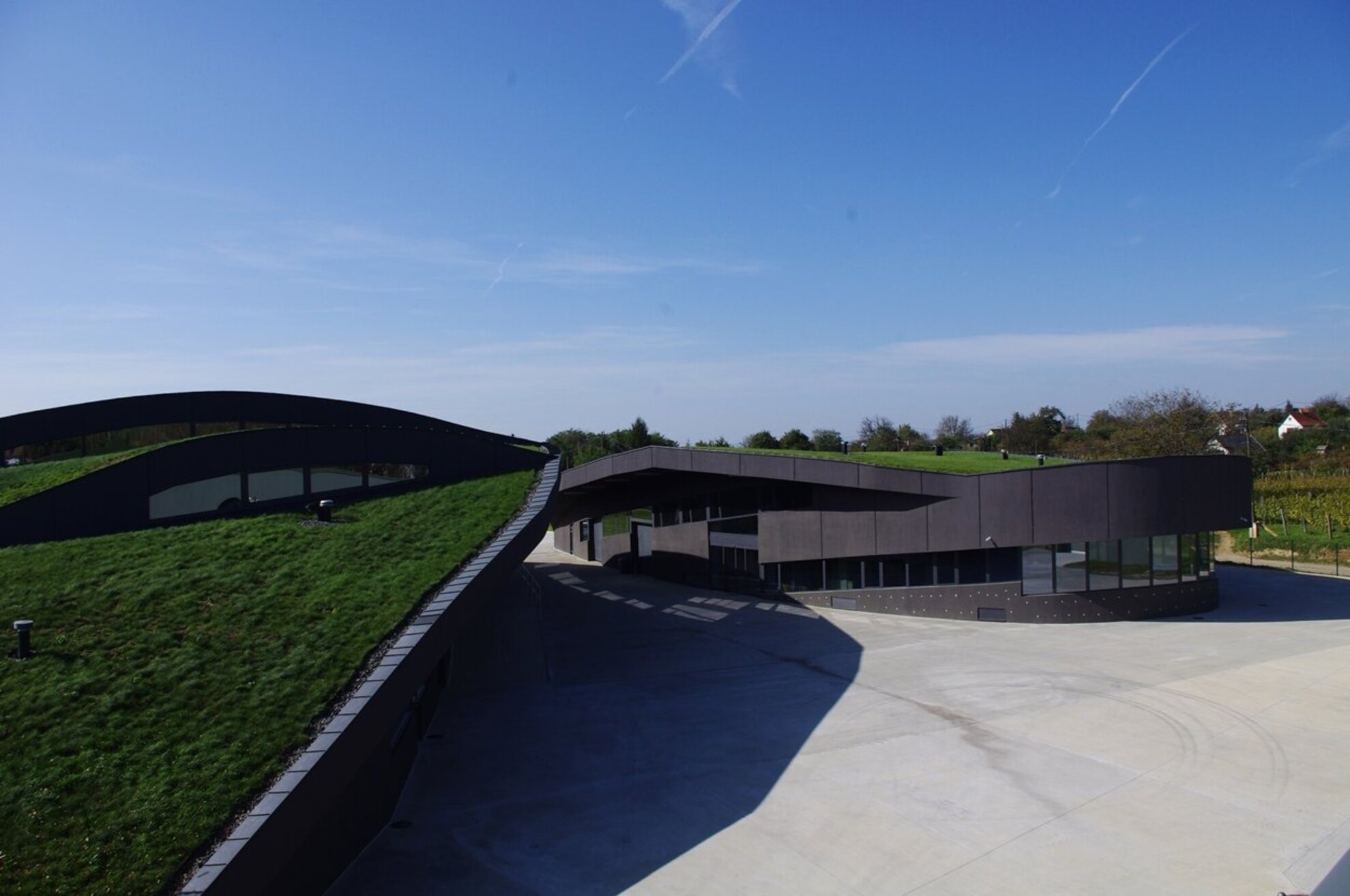
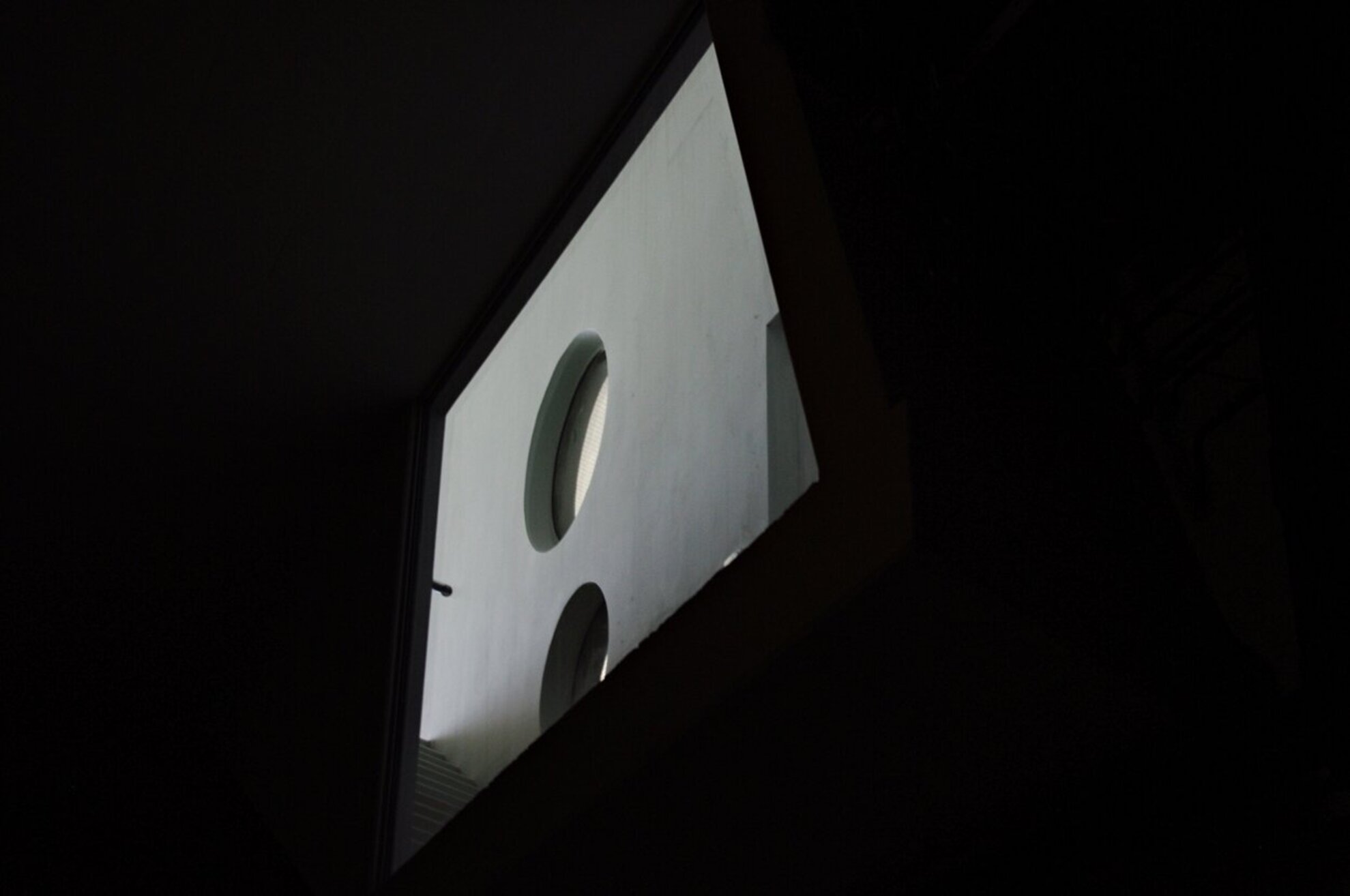
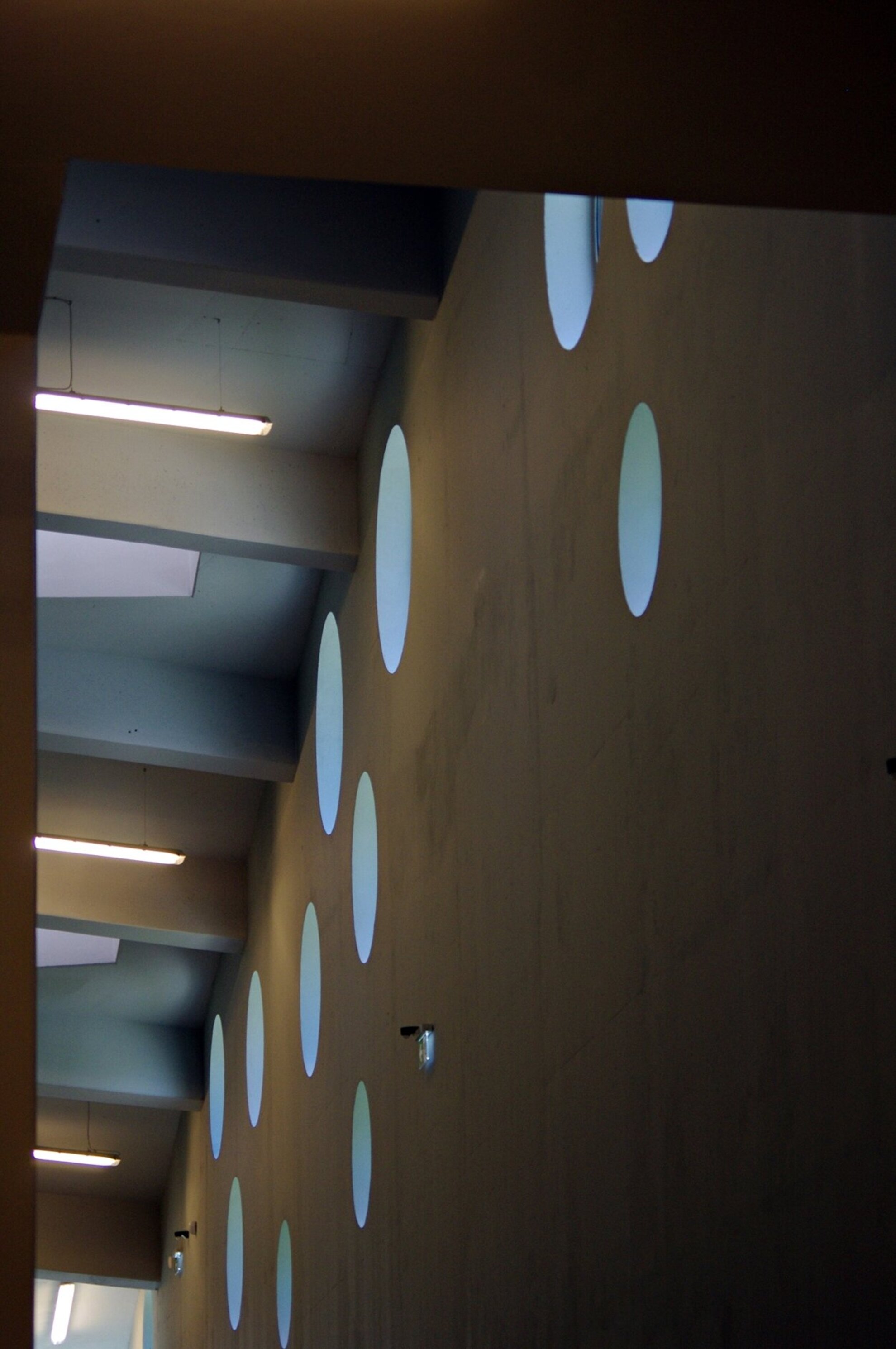
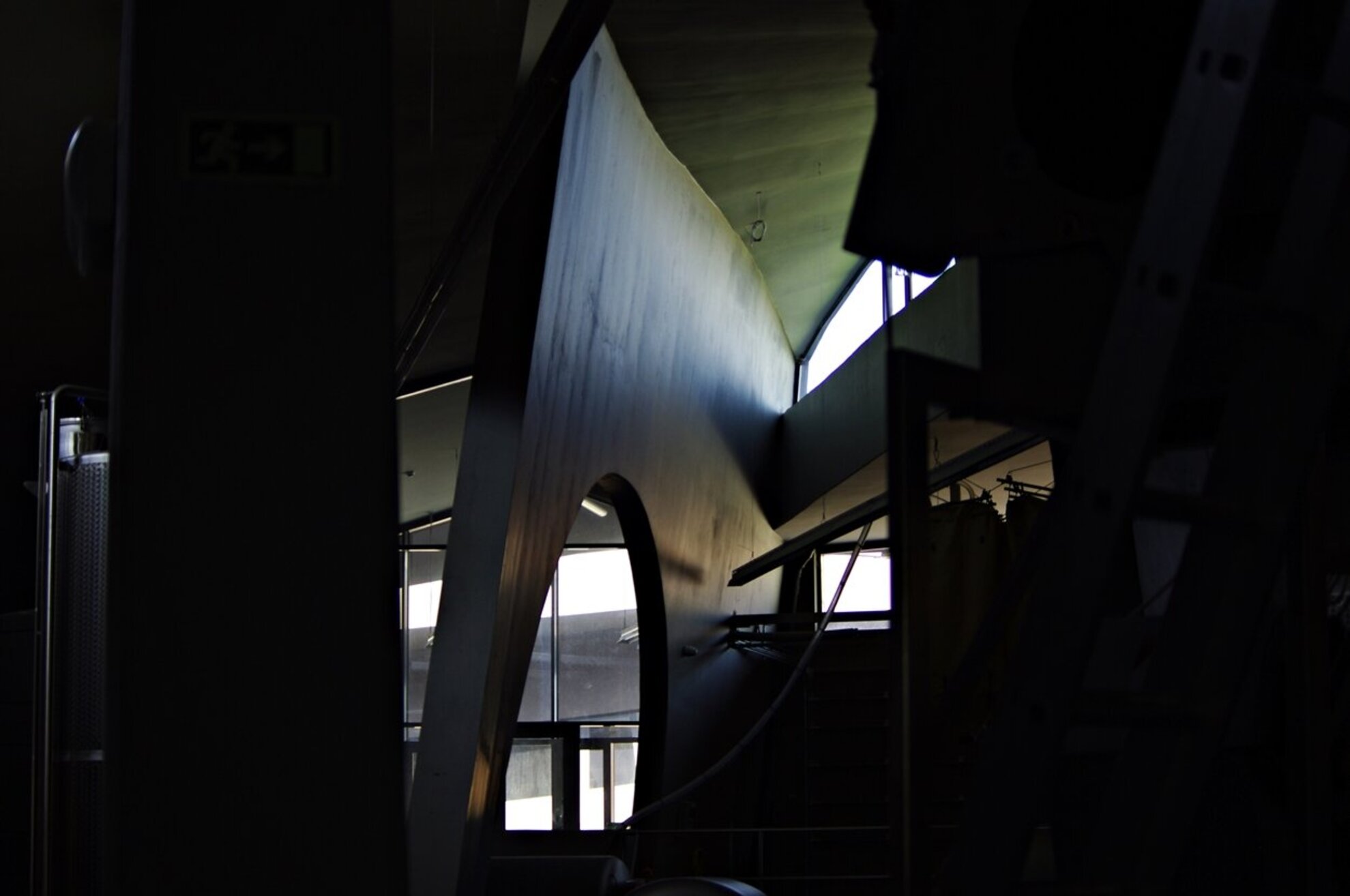
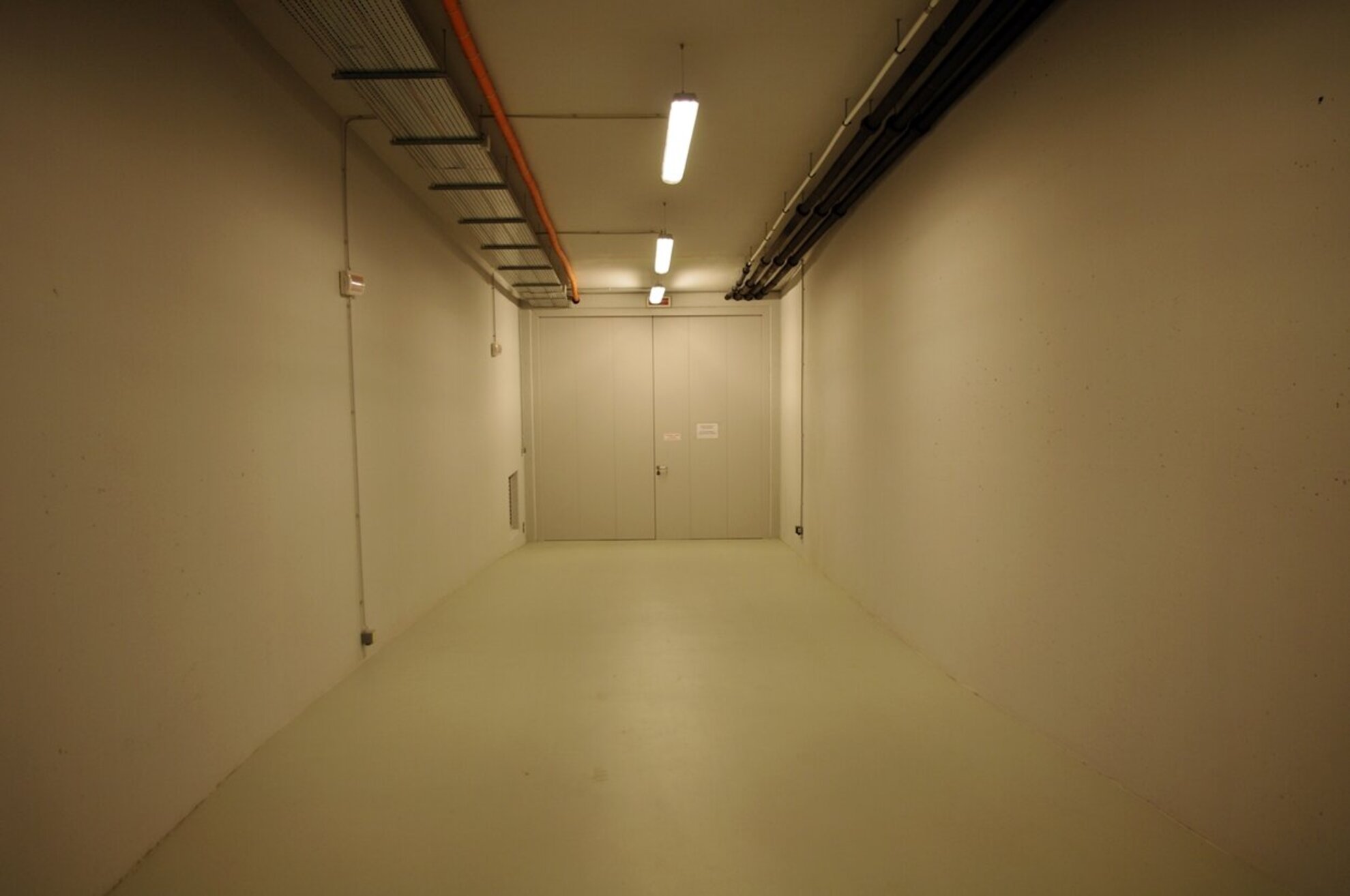
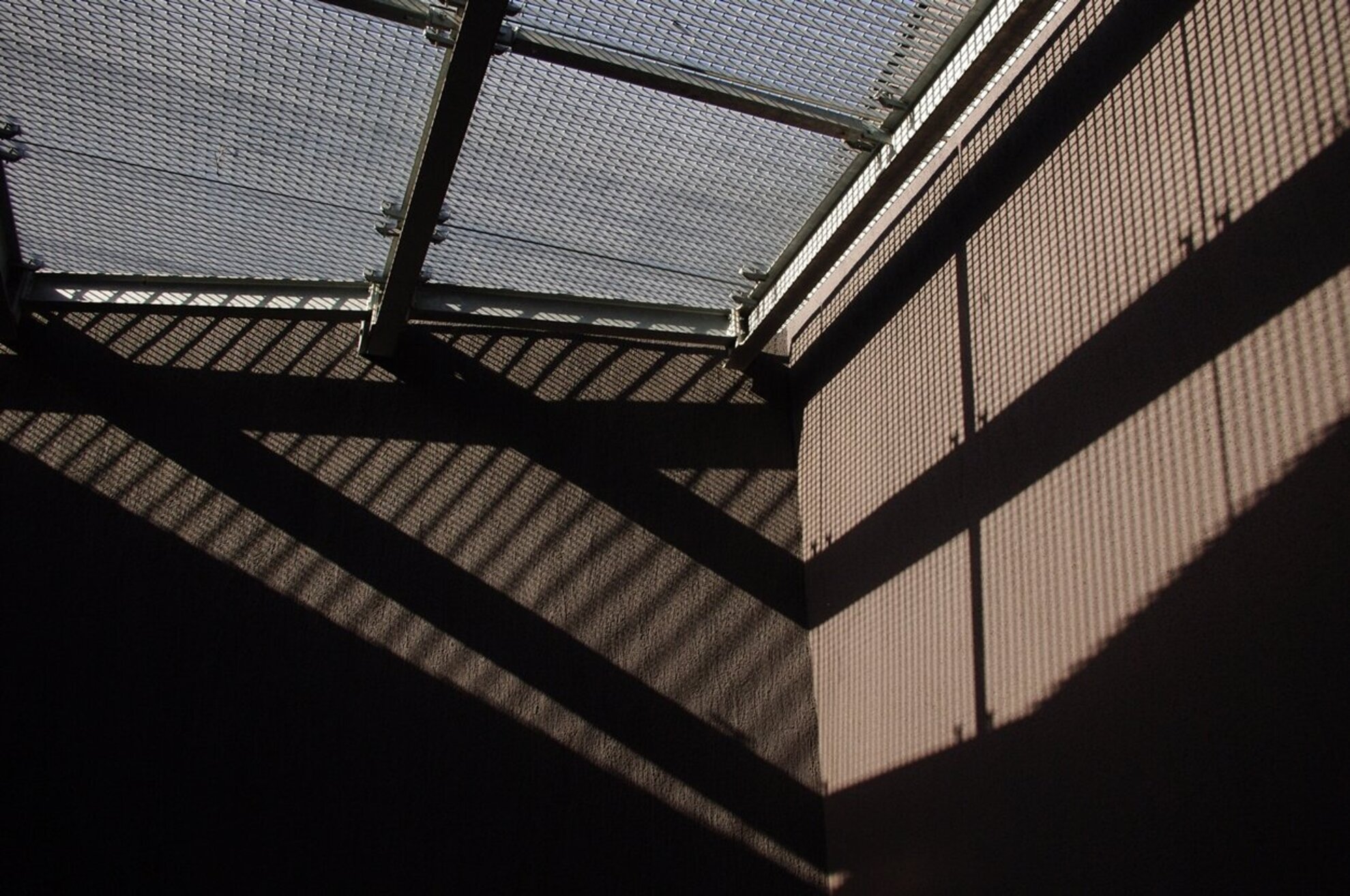
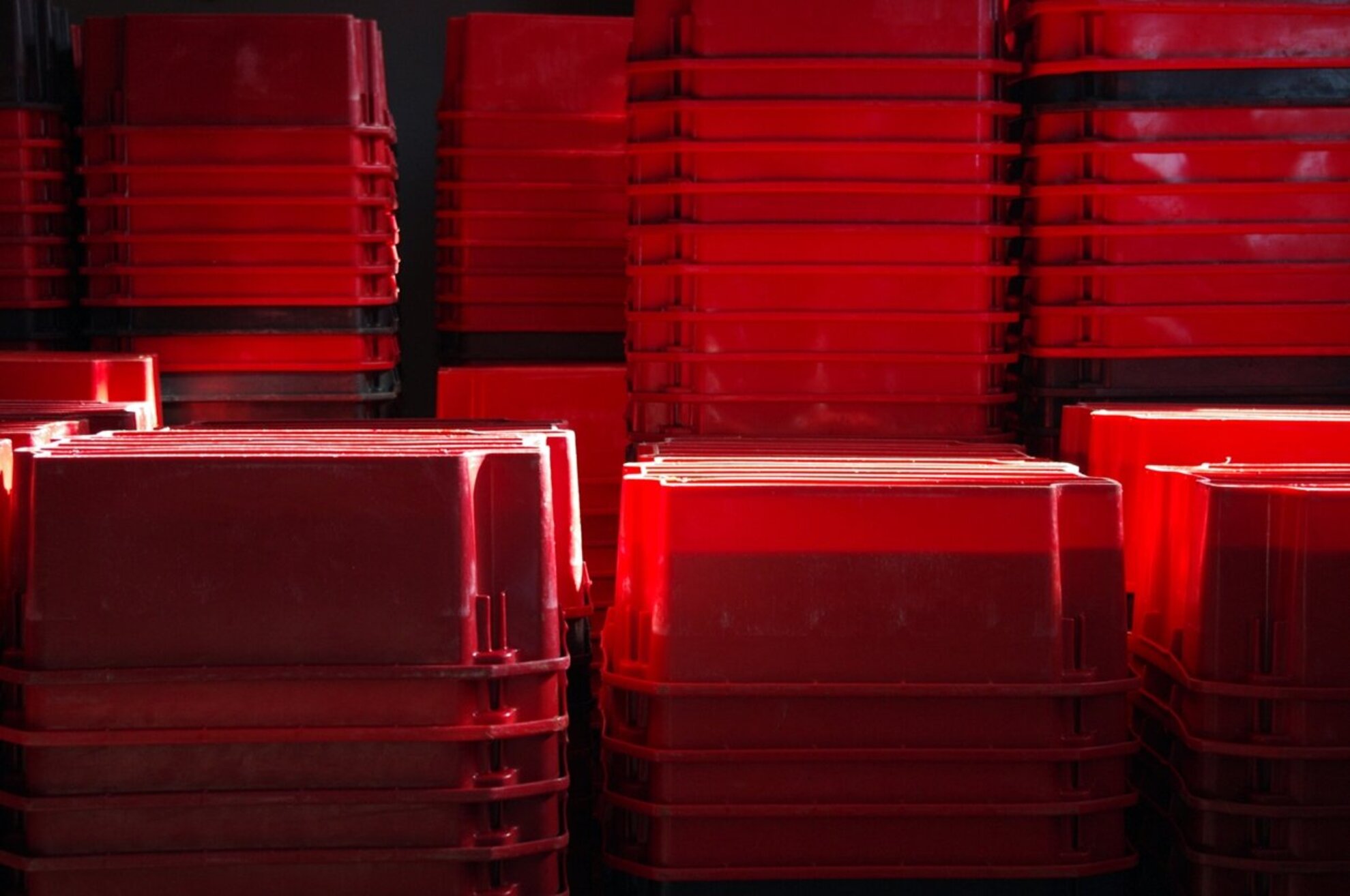
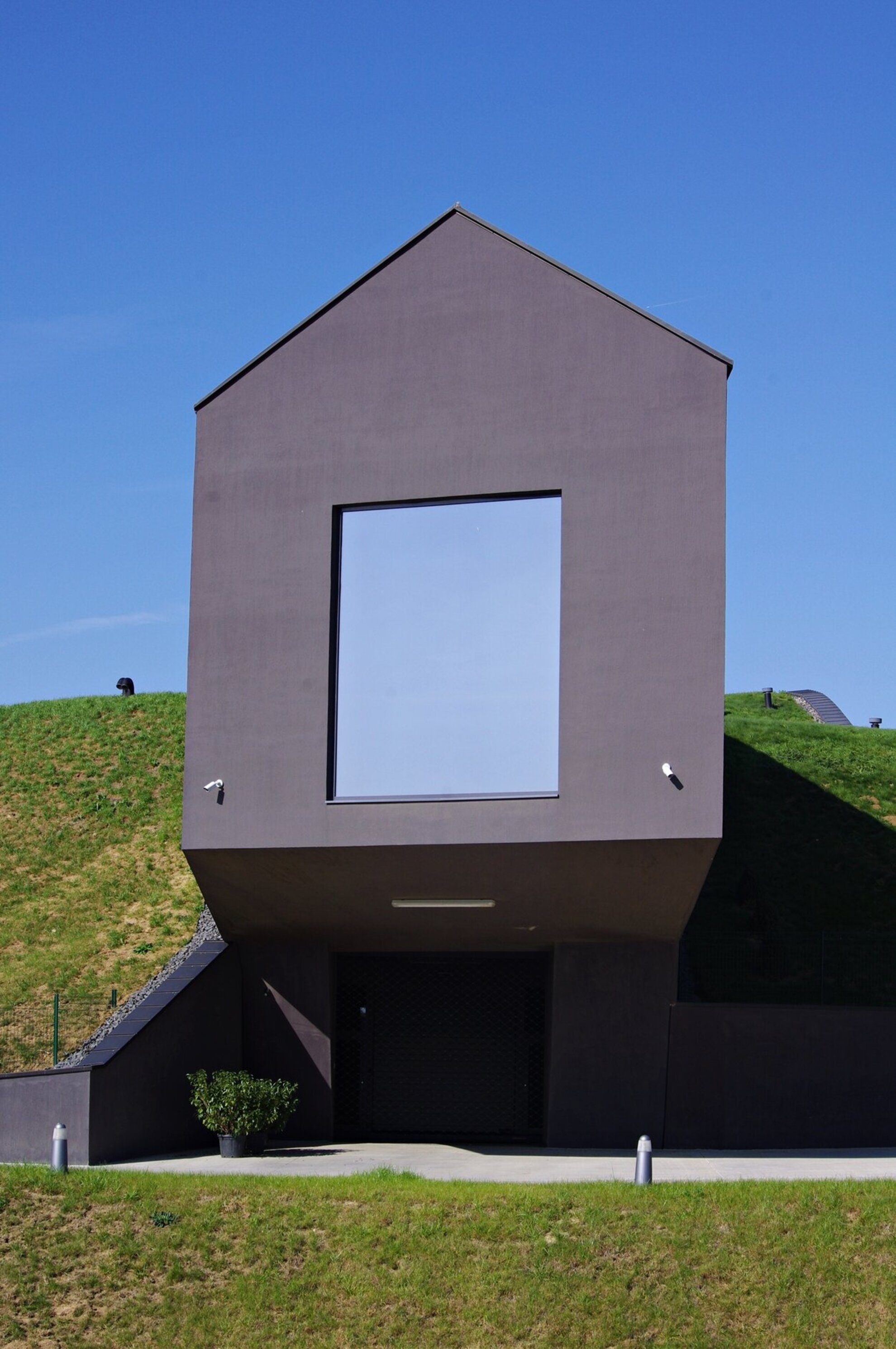
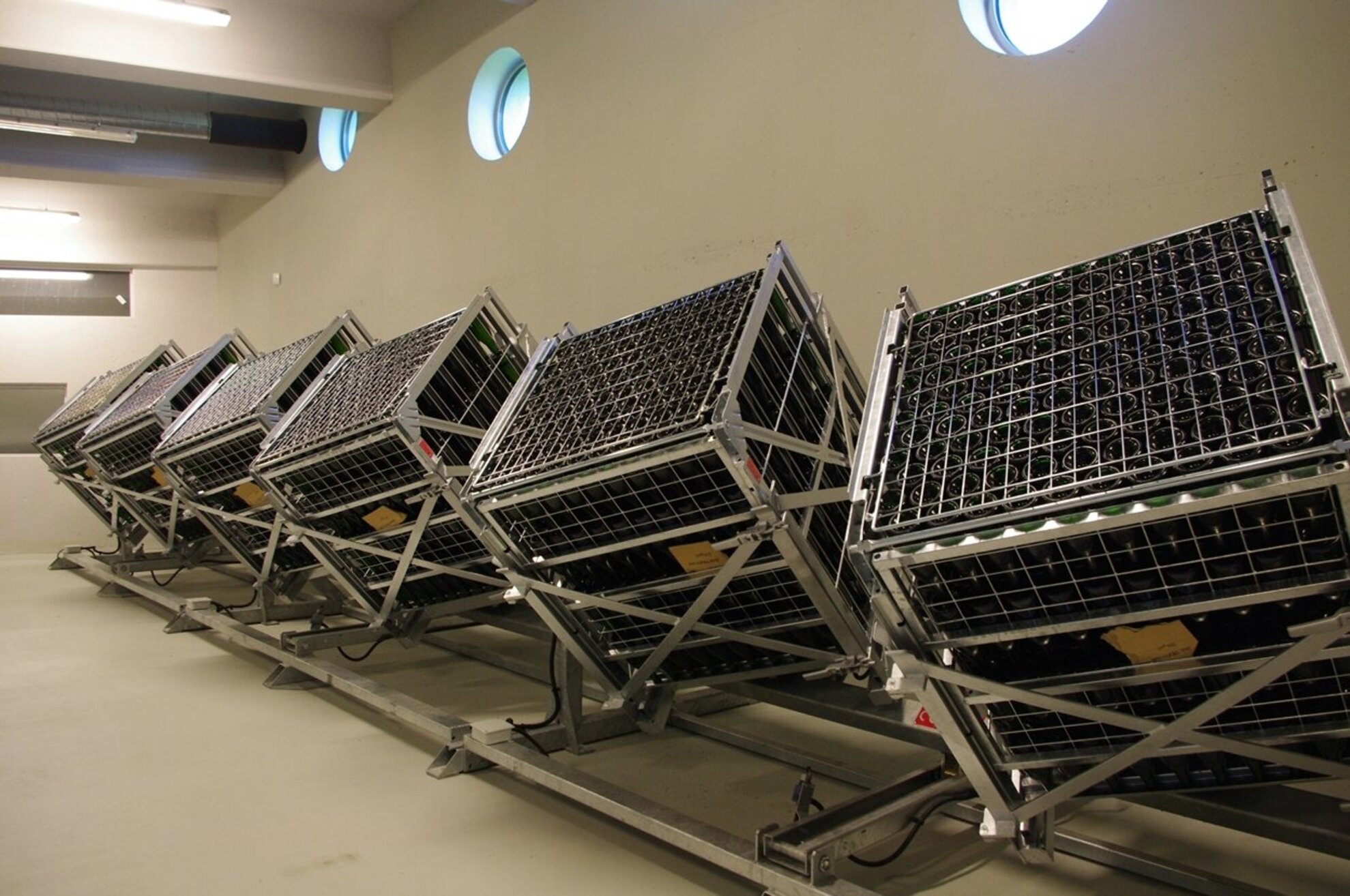
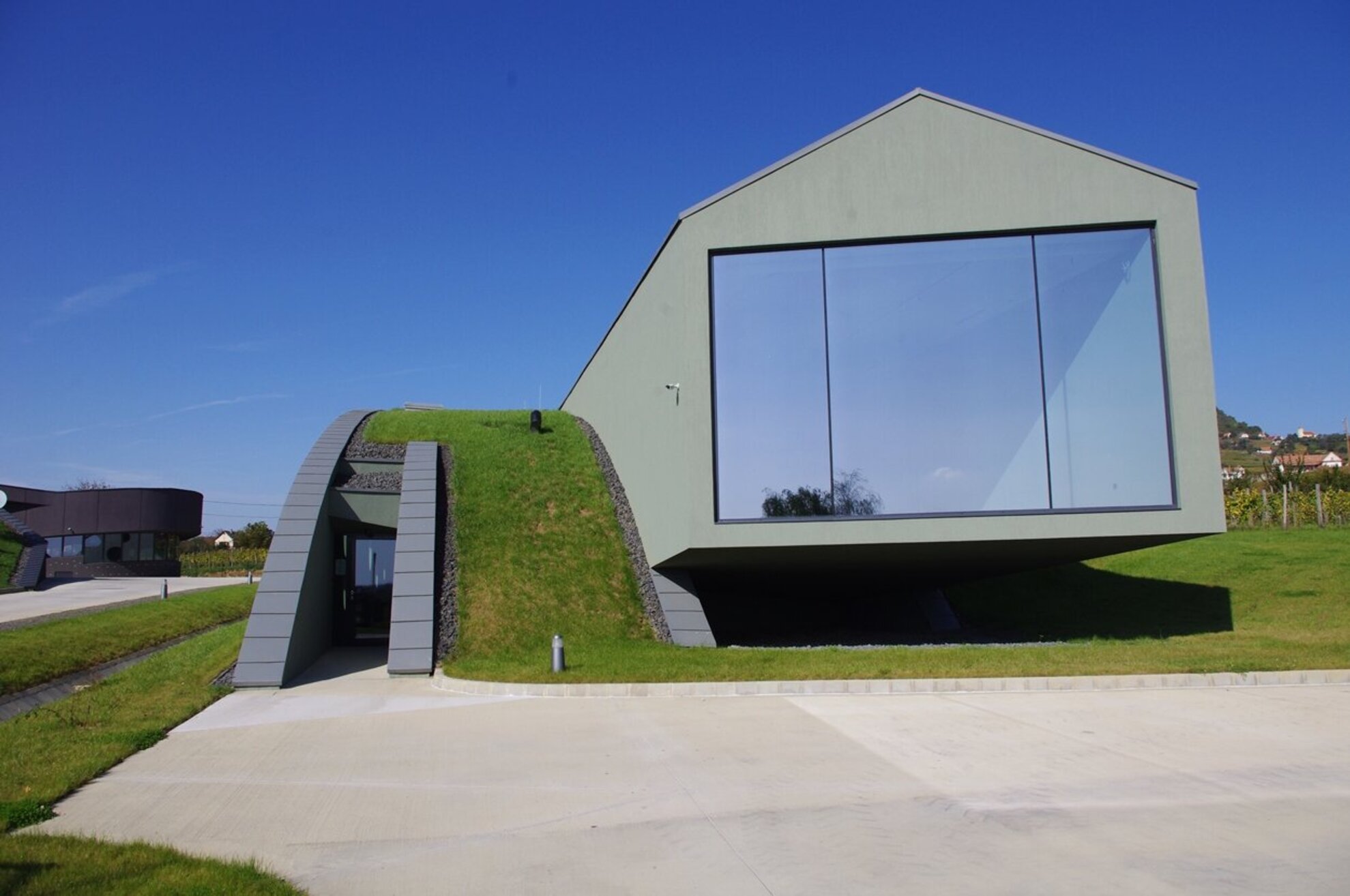
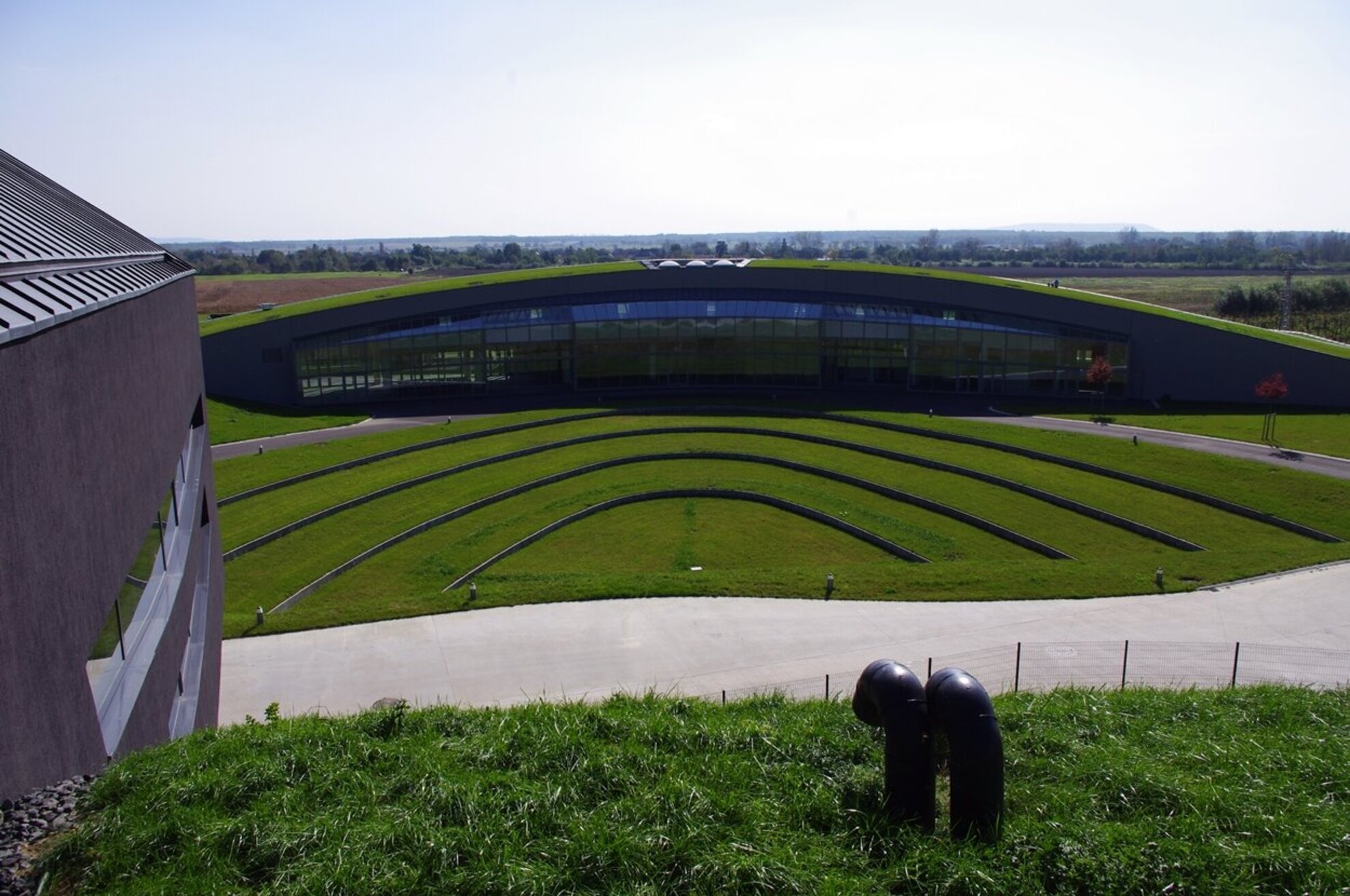
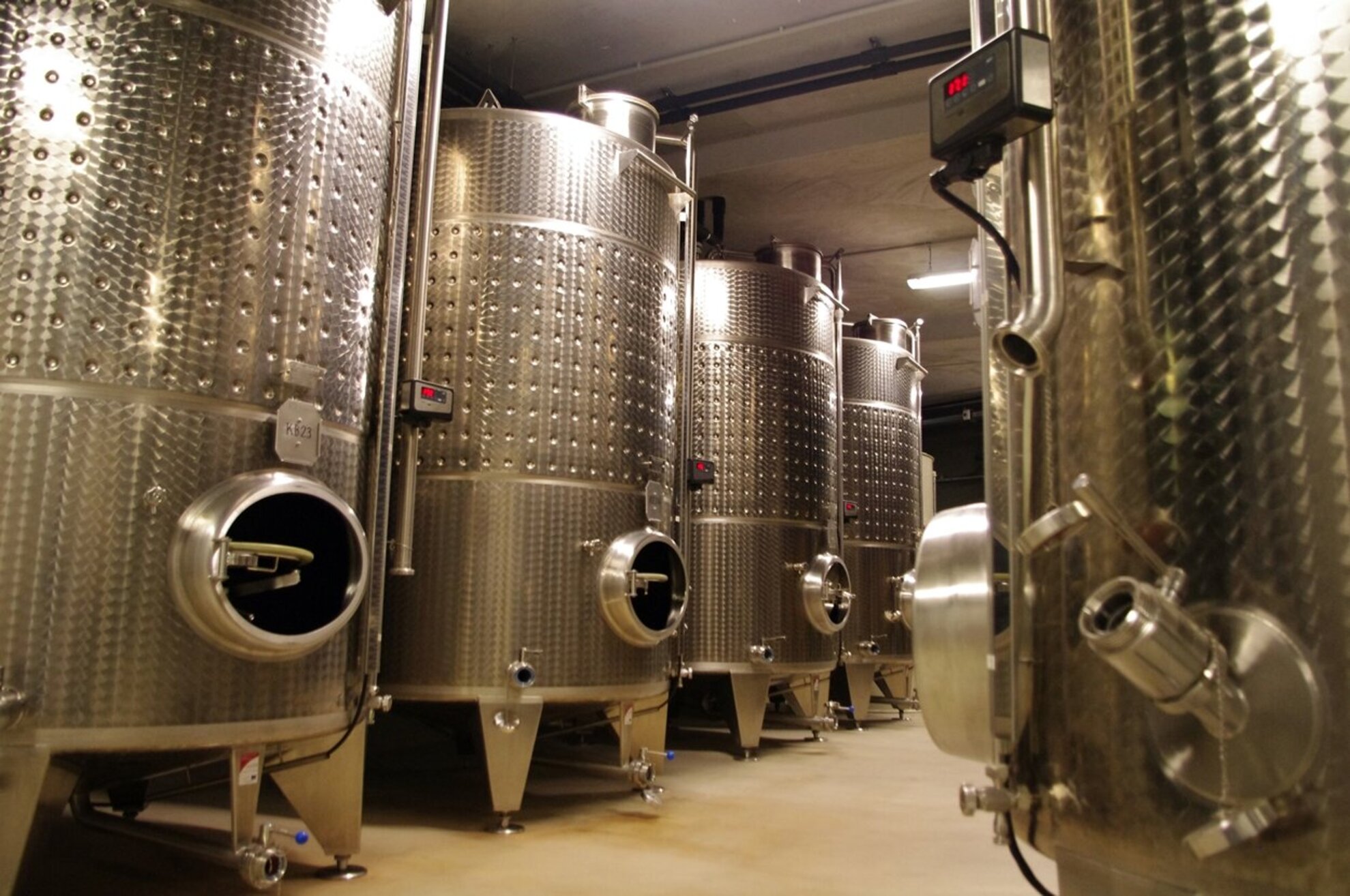
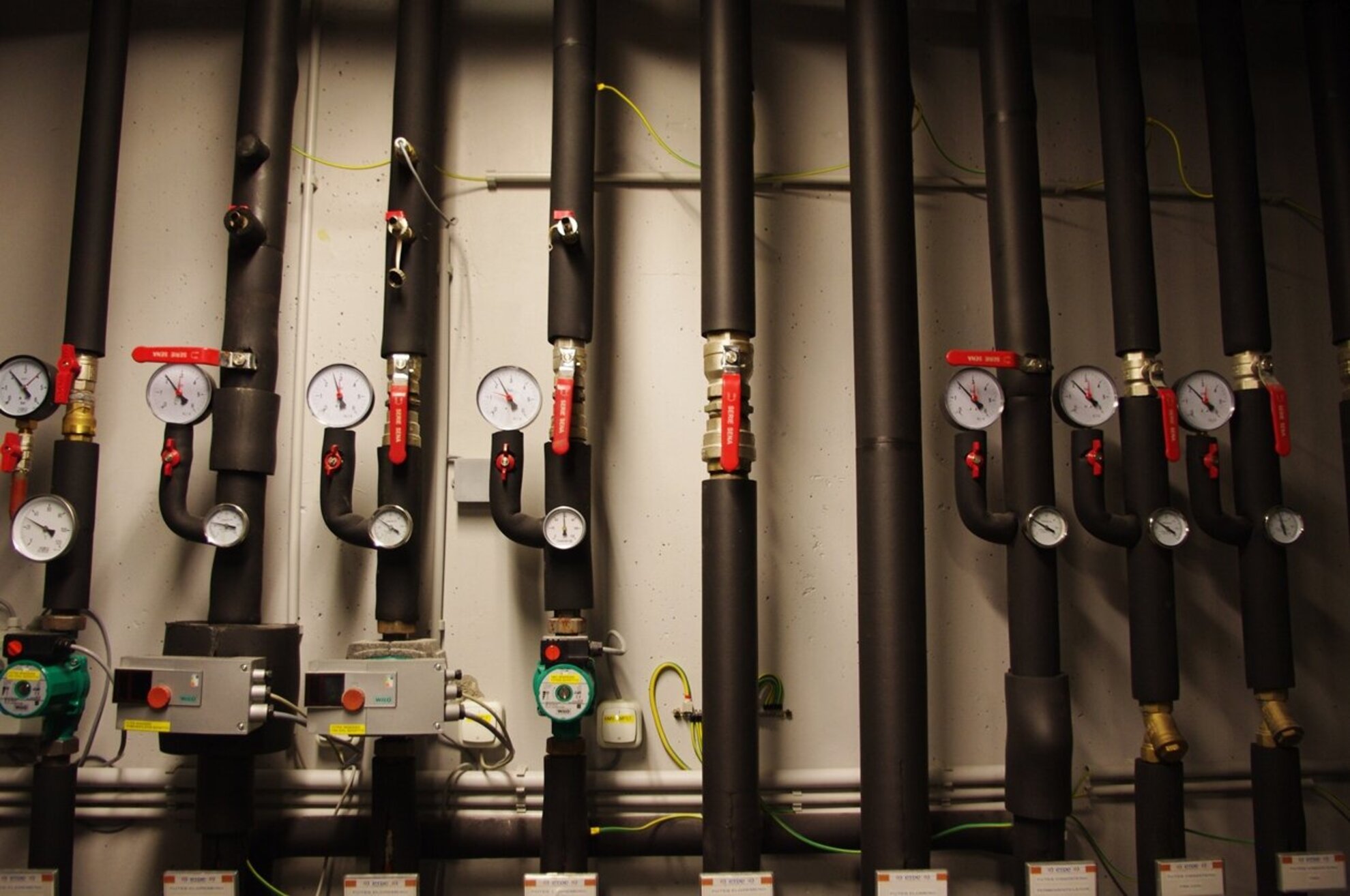
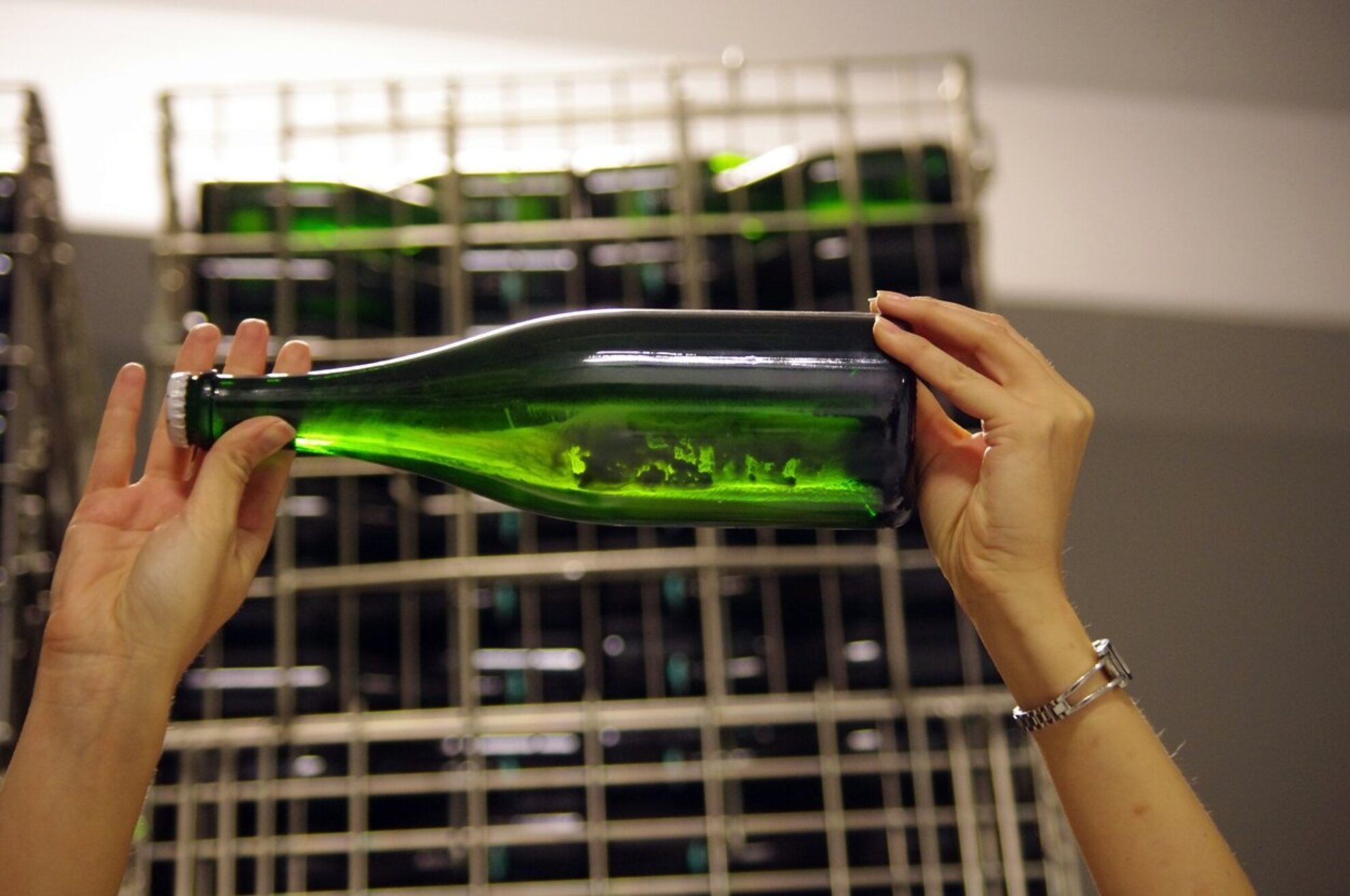
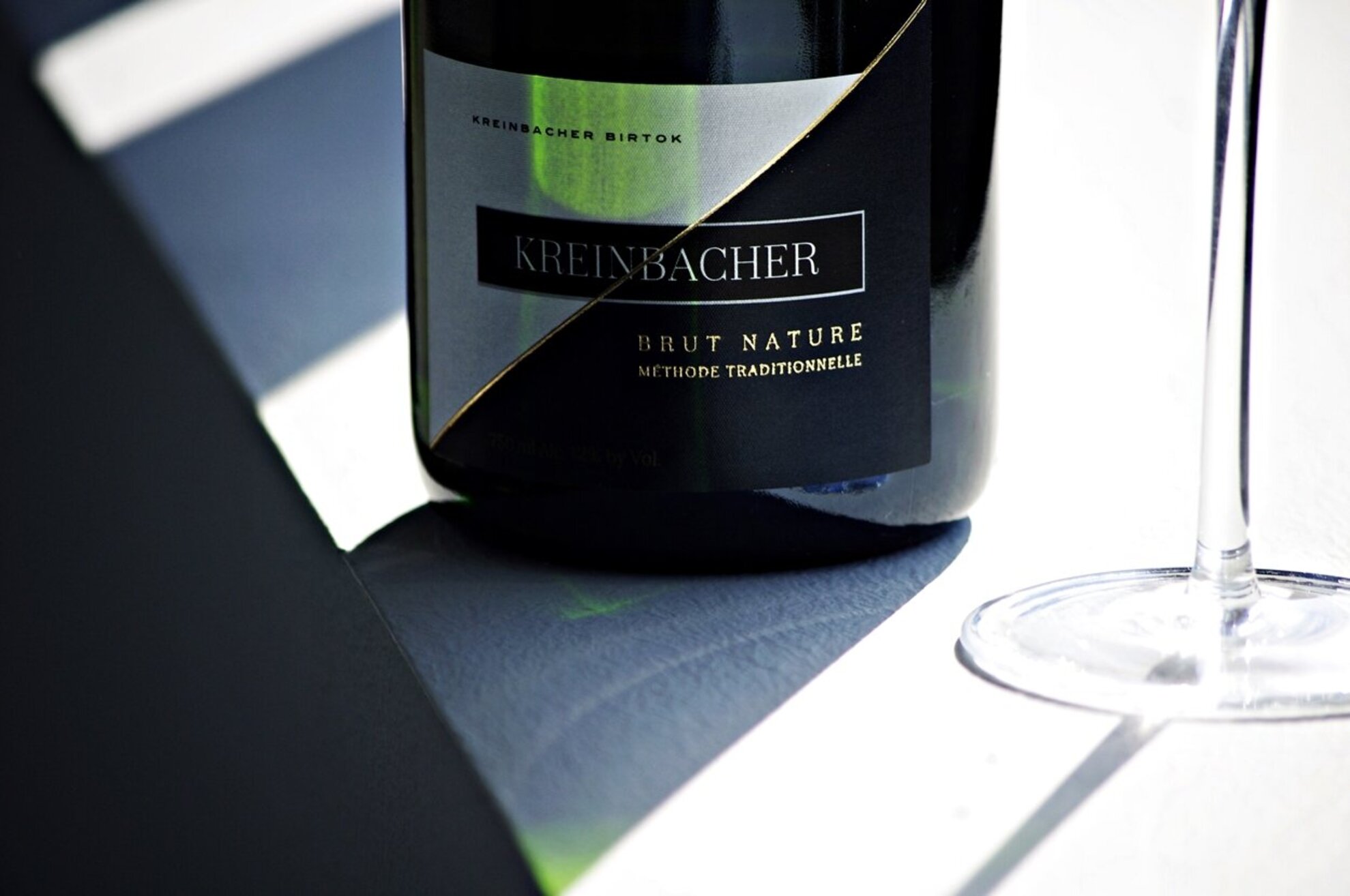
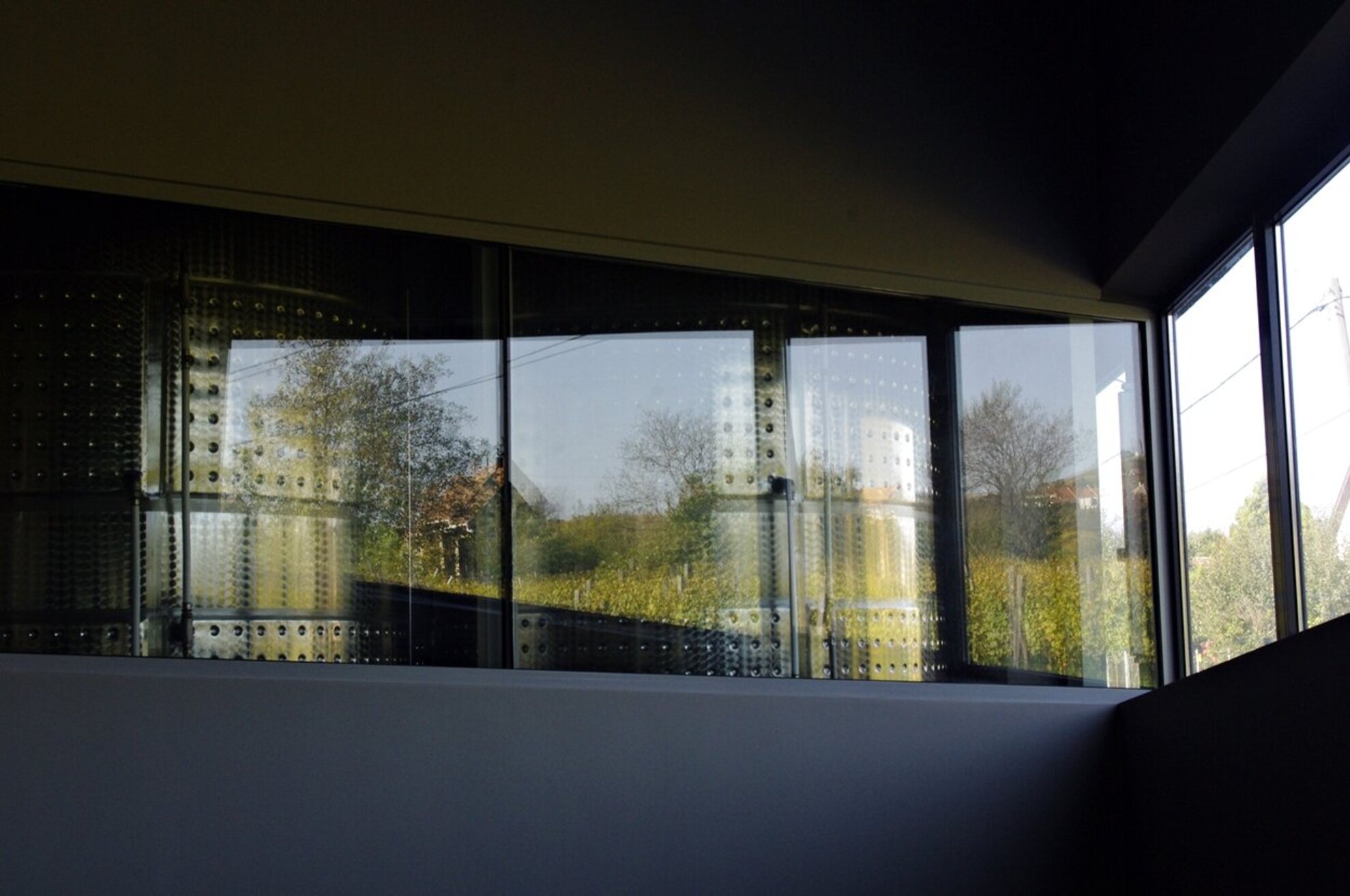
The complex is at the same time complex and simple, angular and rounded, straight and bent. It is brimming with metaphors, like the champagne bubble-like round windows; the negative representation of the winery building, the amphitheatre is an archaic-modern landscape architecture element. The building is the wavy, still orderly mark of Dezső Ekler's hand in the Somló landscape.
Laposa
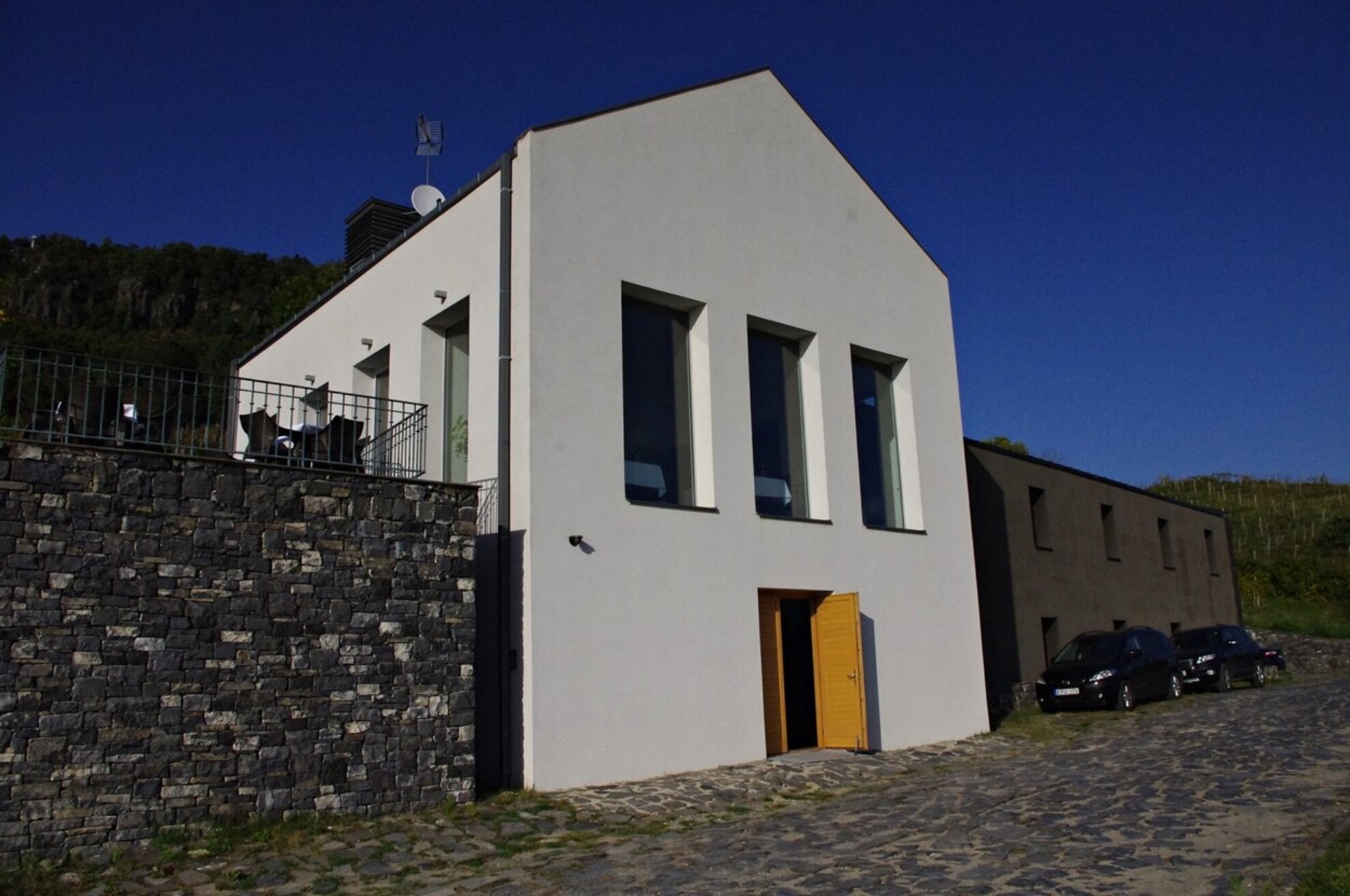
The last turn of our exploration of the modern wineries in the Balaton Uplands takes us to Badacsony. Following the Római út from Badacsonytomaj, parallel to the hills and then turning sharply uphill, you'll reach a narrow hillside road that takes you to the wine hotel and adjoining event venue designed by Péter Kis and Bea Molnár. To avoid misunderstandings: the name is Laposa, however, this is not the winery rlun by Bence and Zsófia.
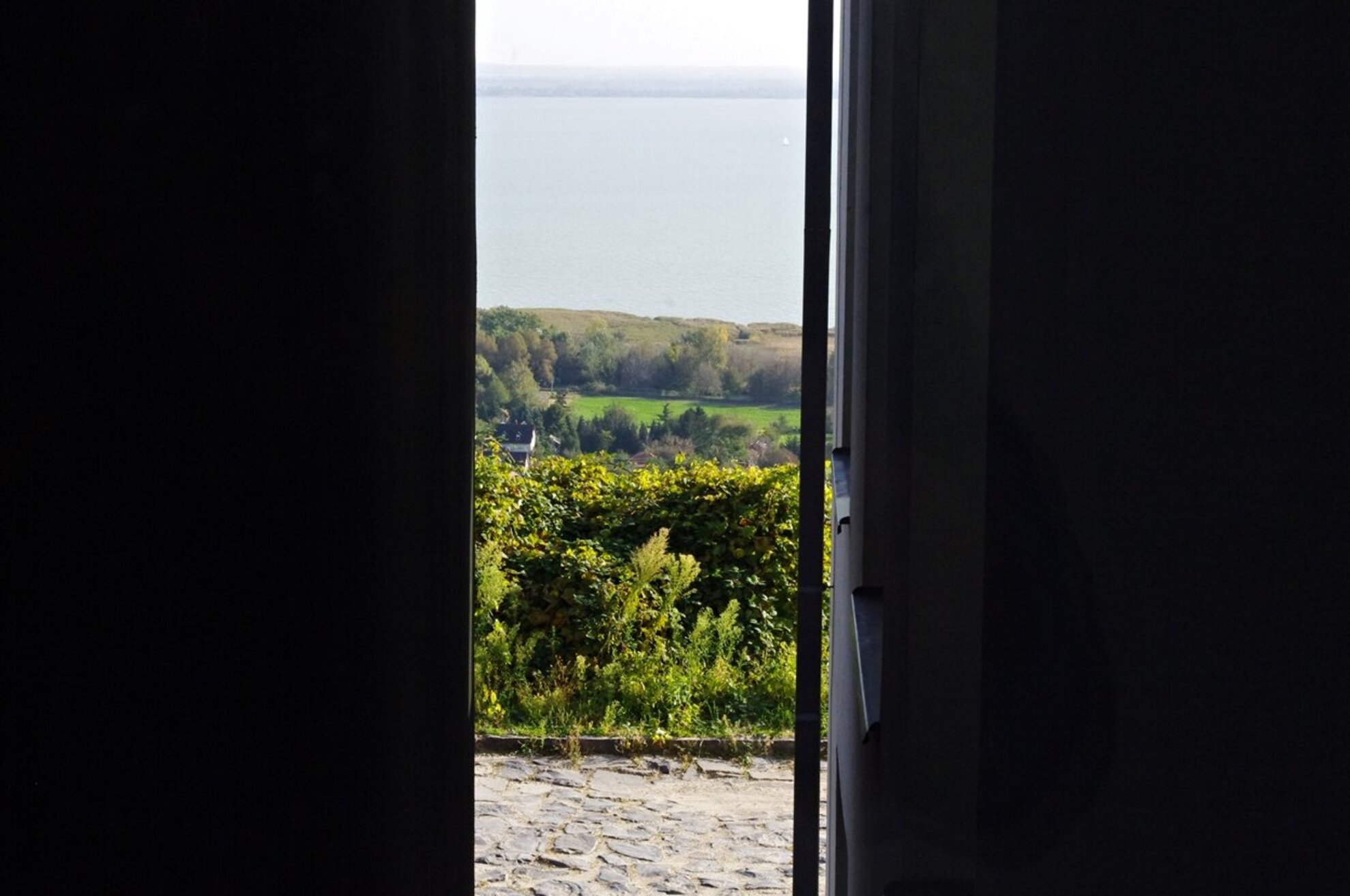
The wine hotel comprises of two simple, adjoining masses. The wing to the left is similar to the white press houses, striking from a distance, while the basalt coloured wing follows the natural environment.
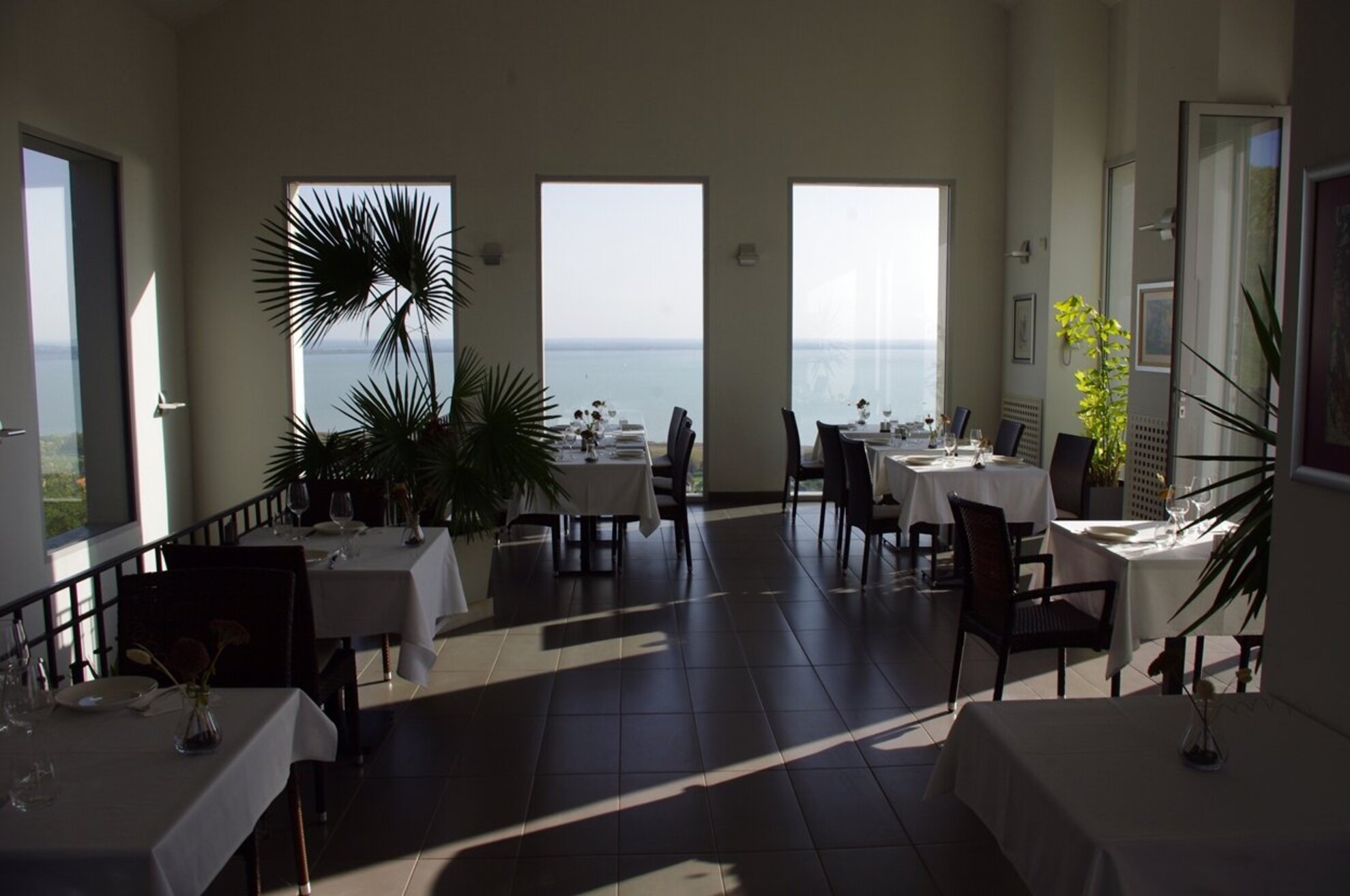
Behind 10 small windows there are just as many rooms within the wing of simple floor plan. The building that houses the reception room, the reception, the wellness department to the left and the upstairs restaurant is perpendicular to the hillside.
